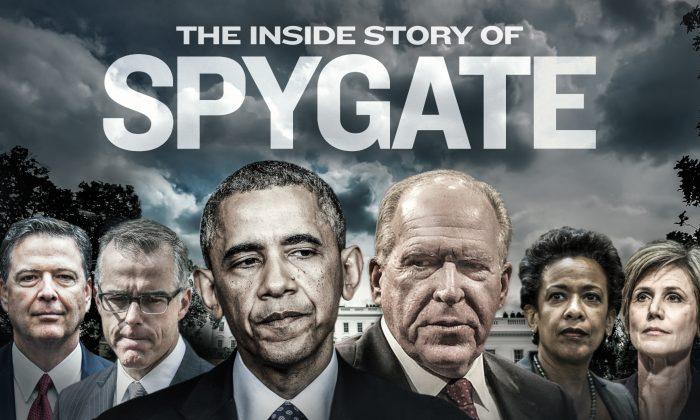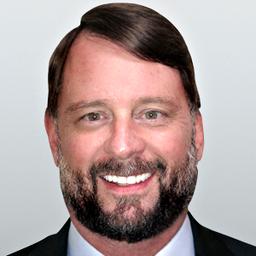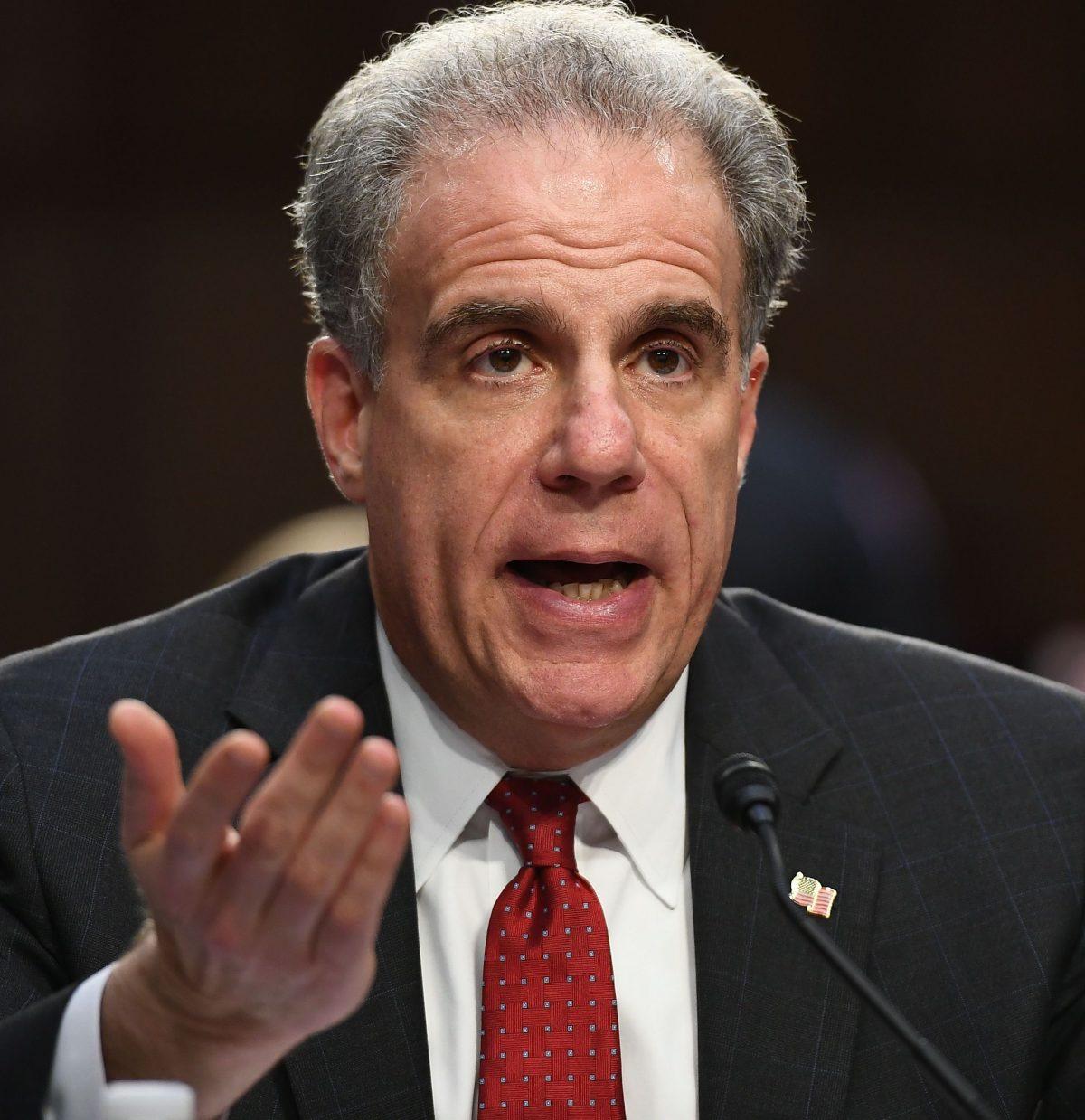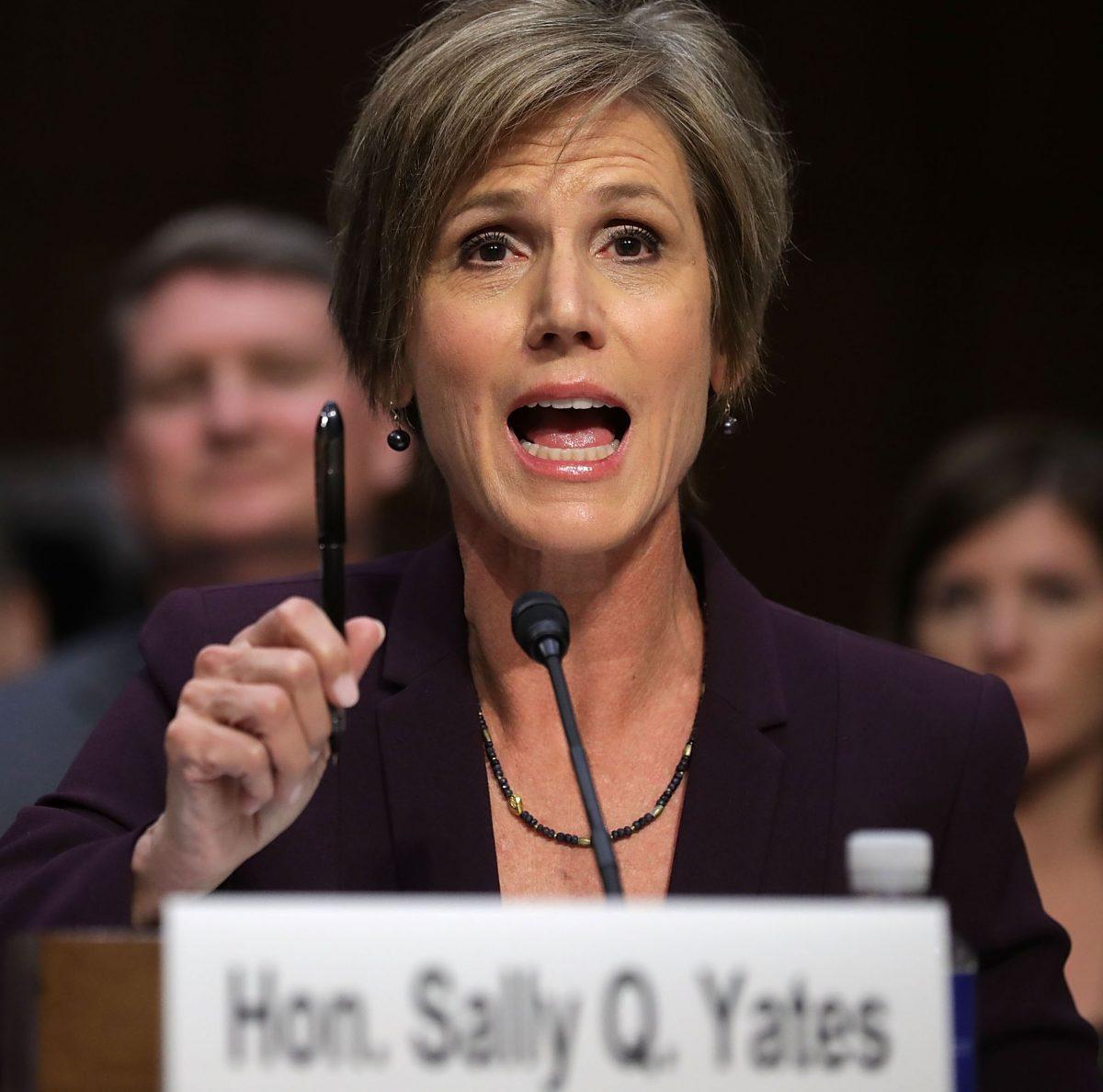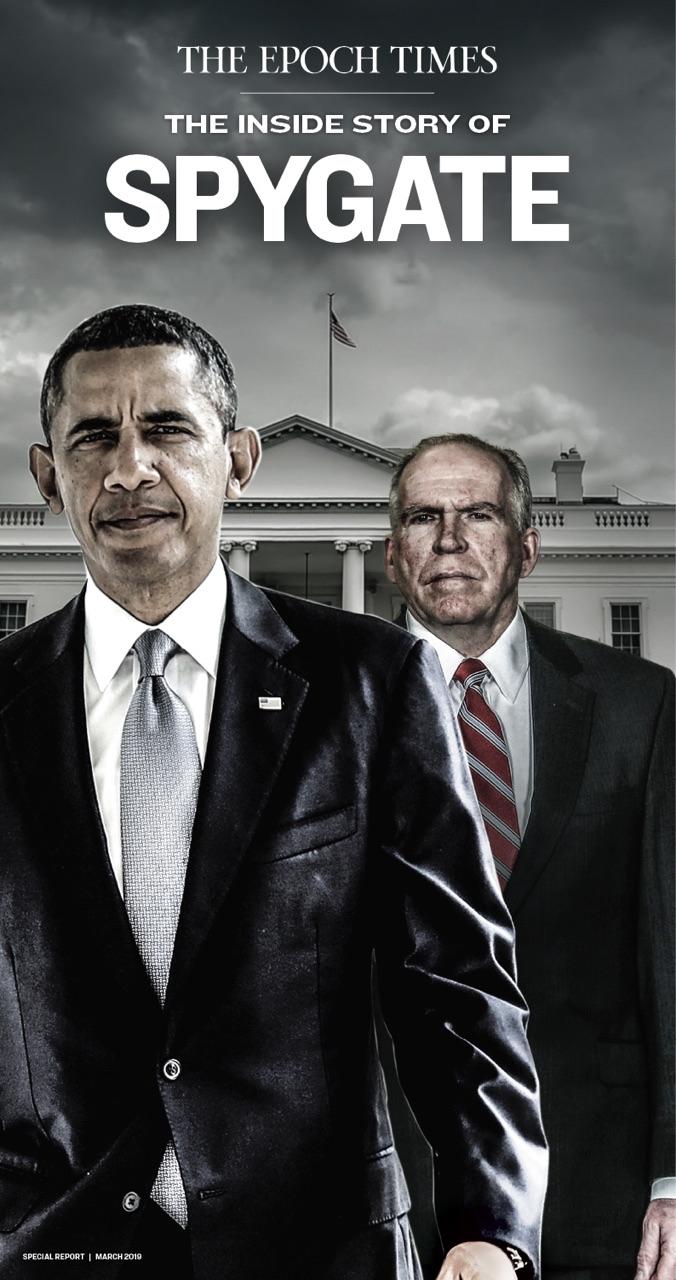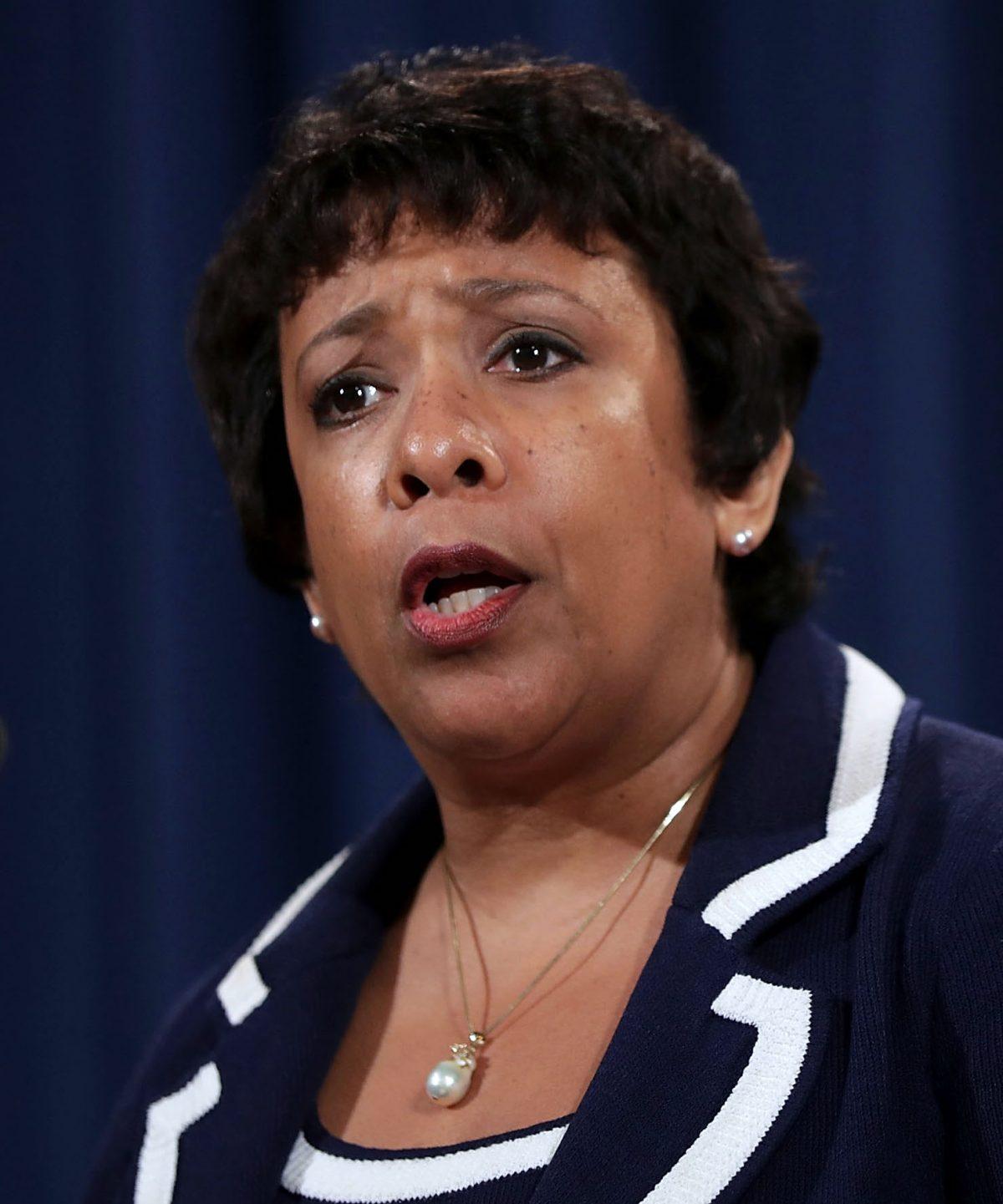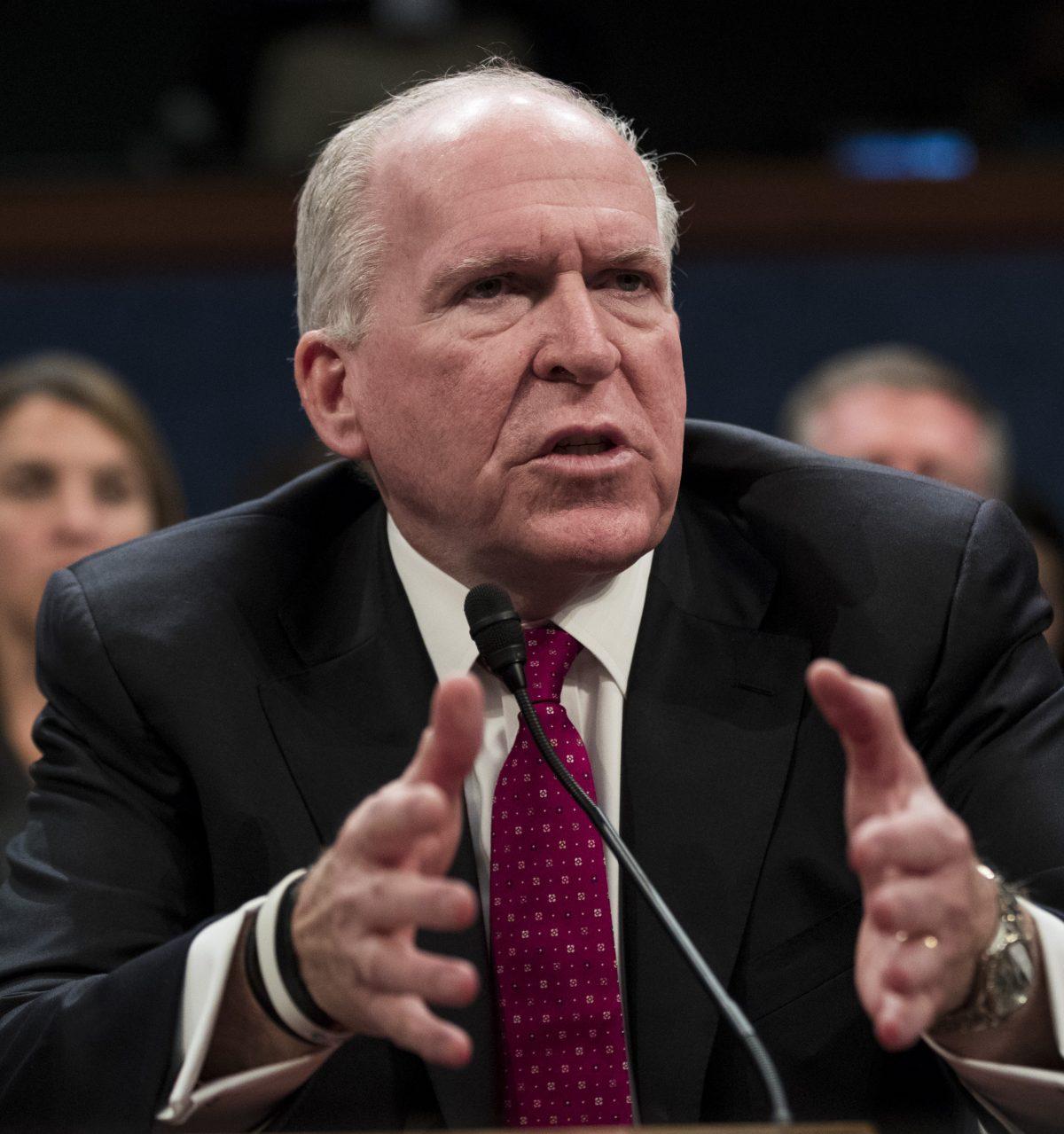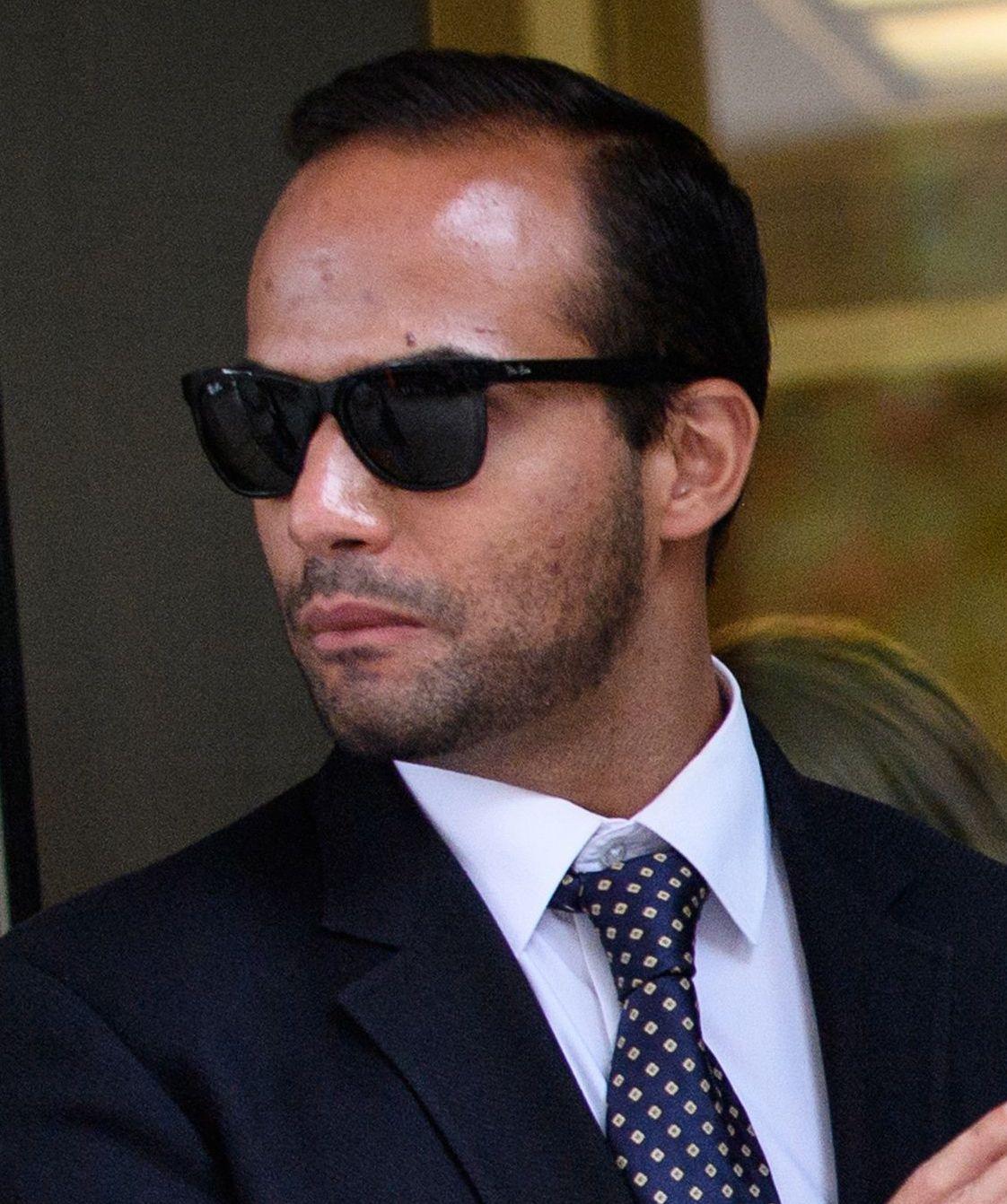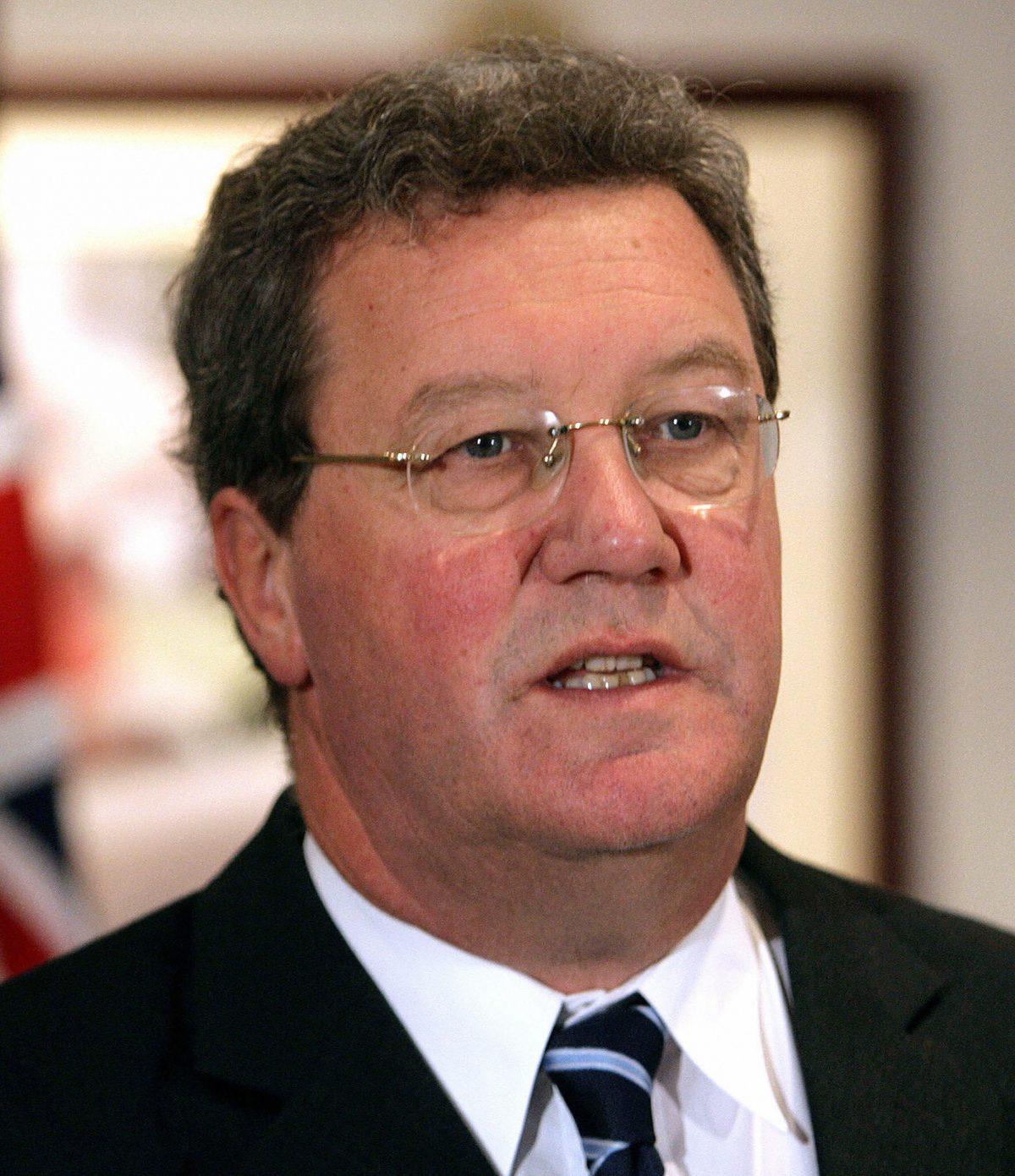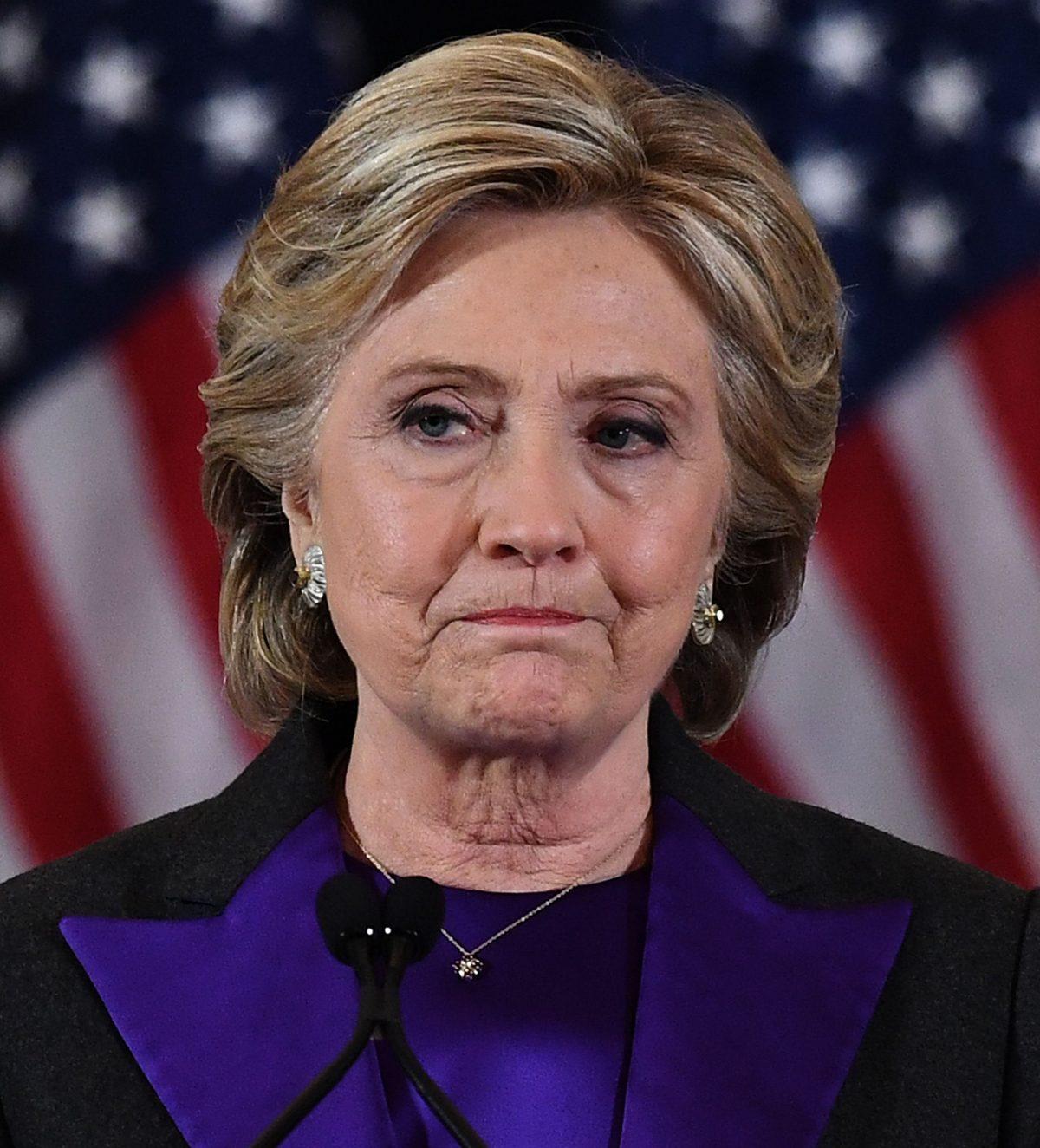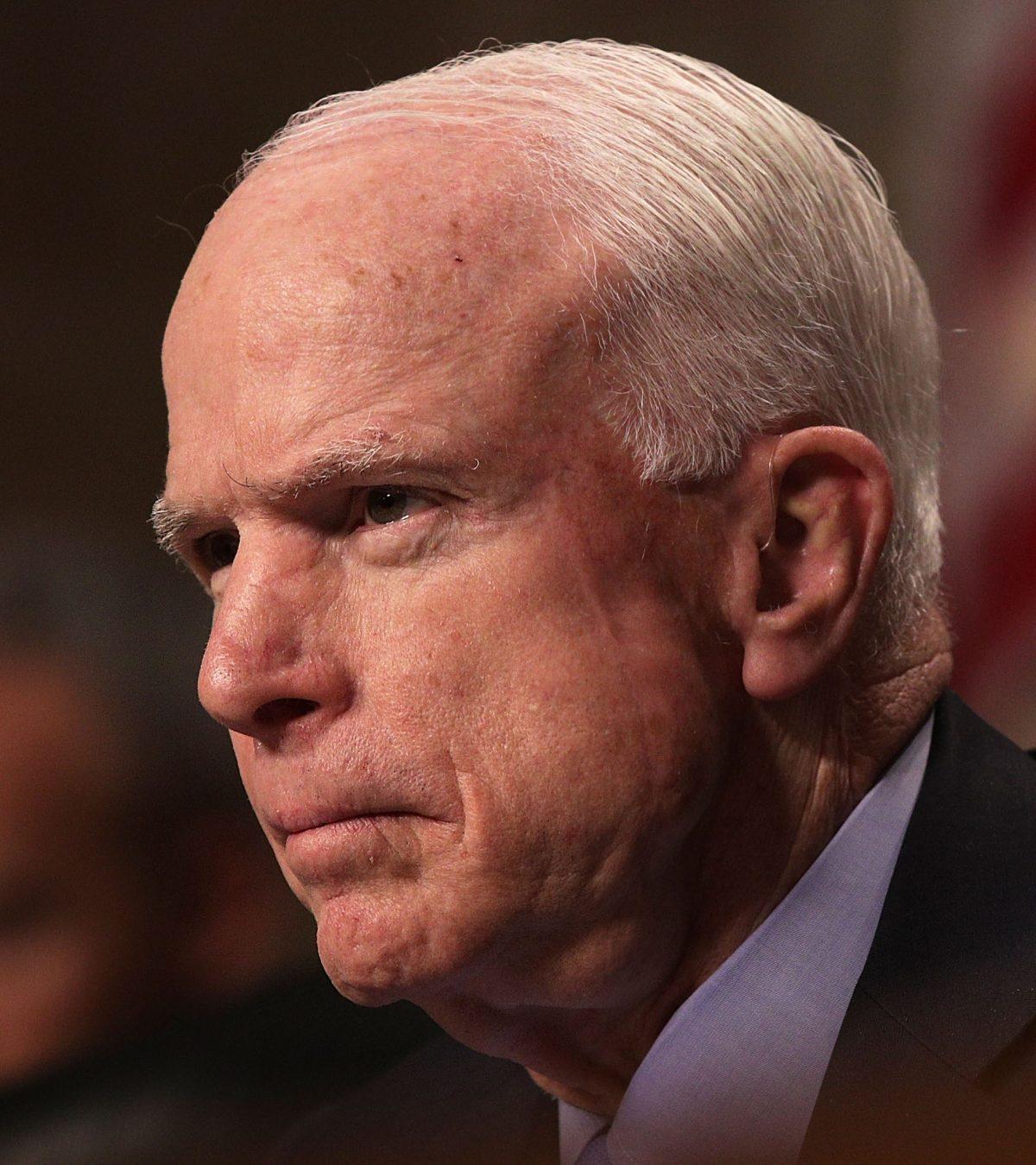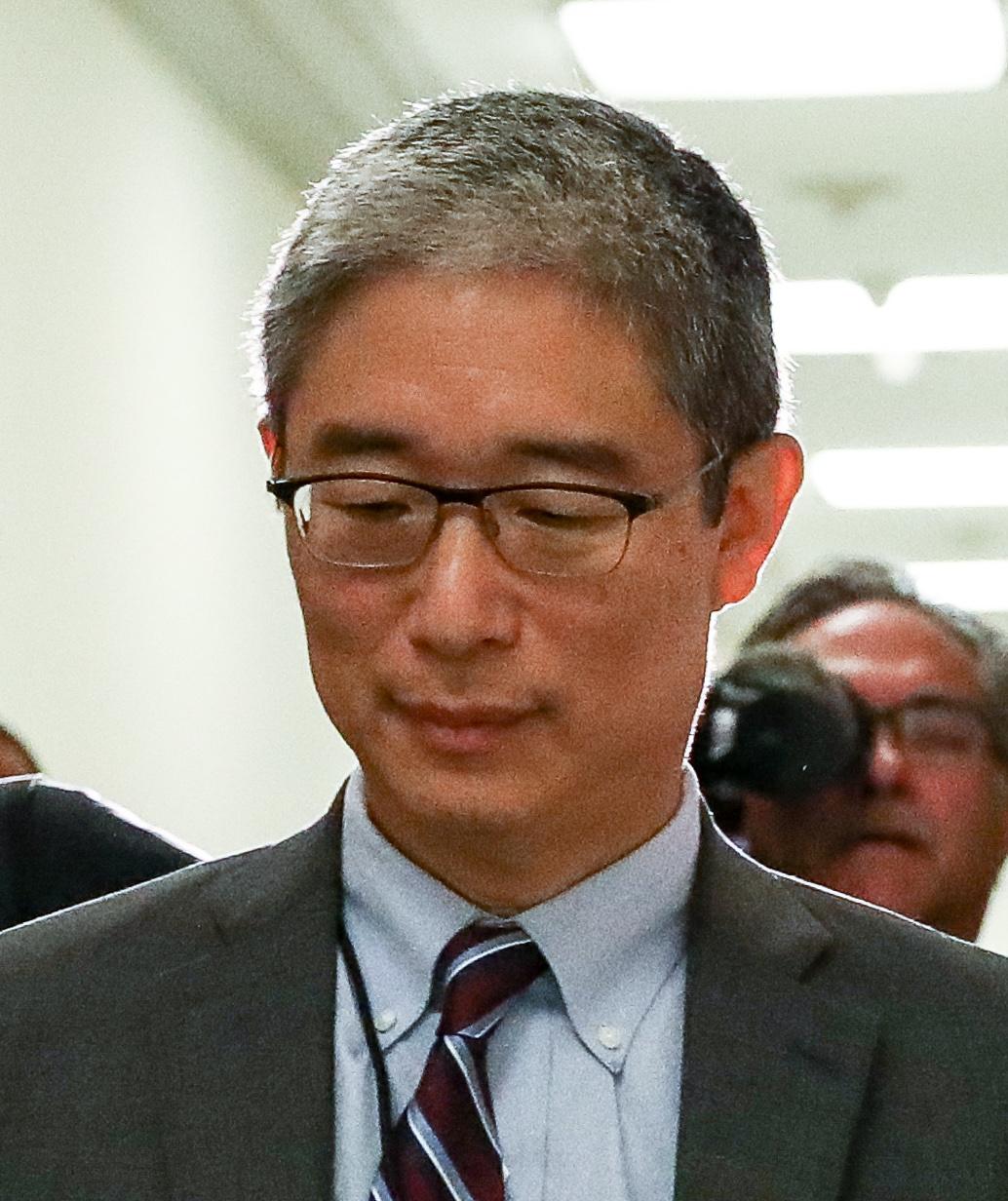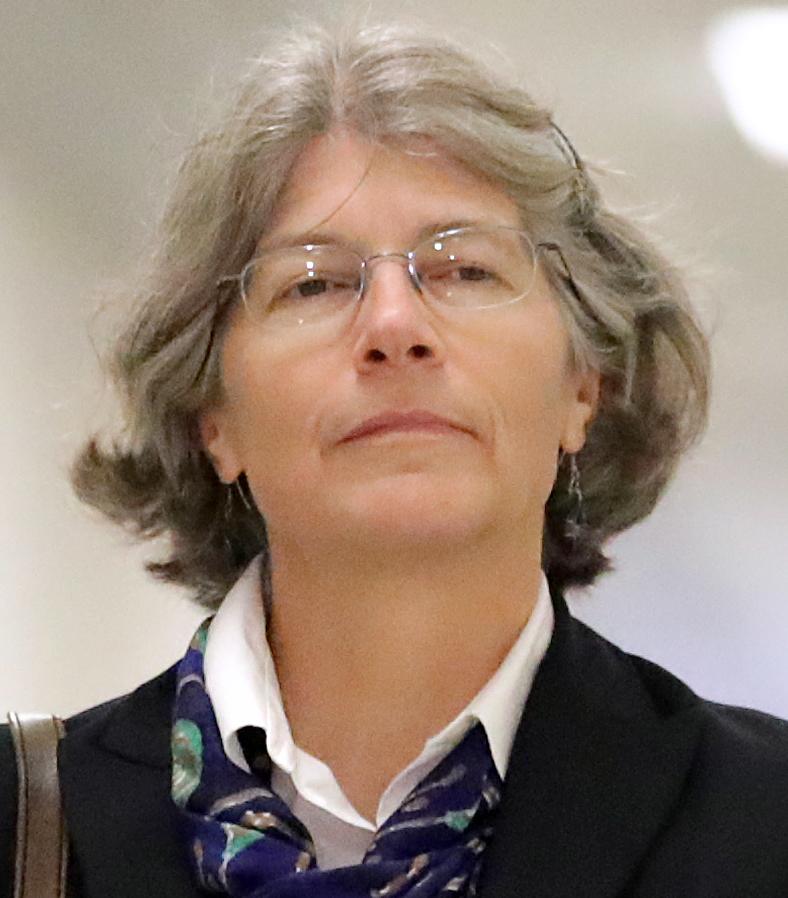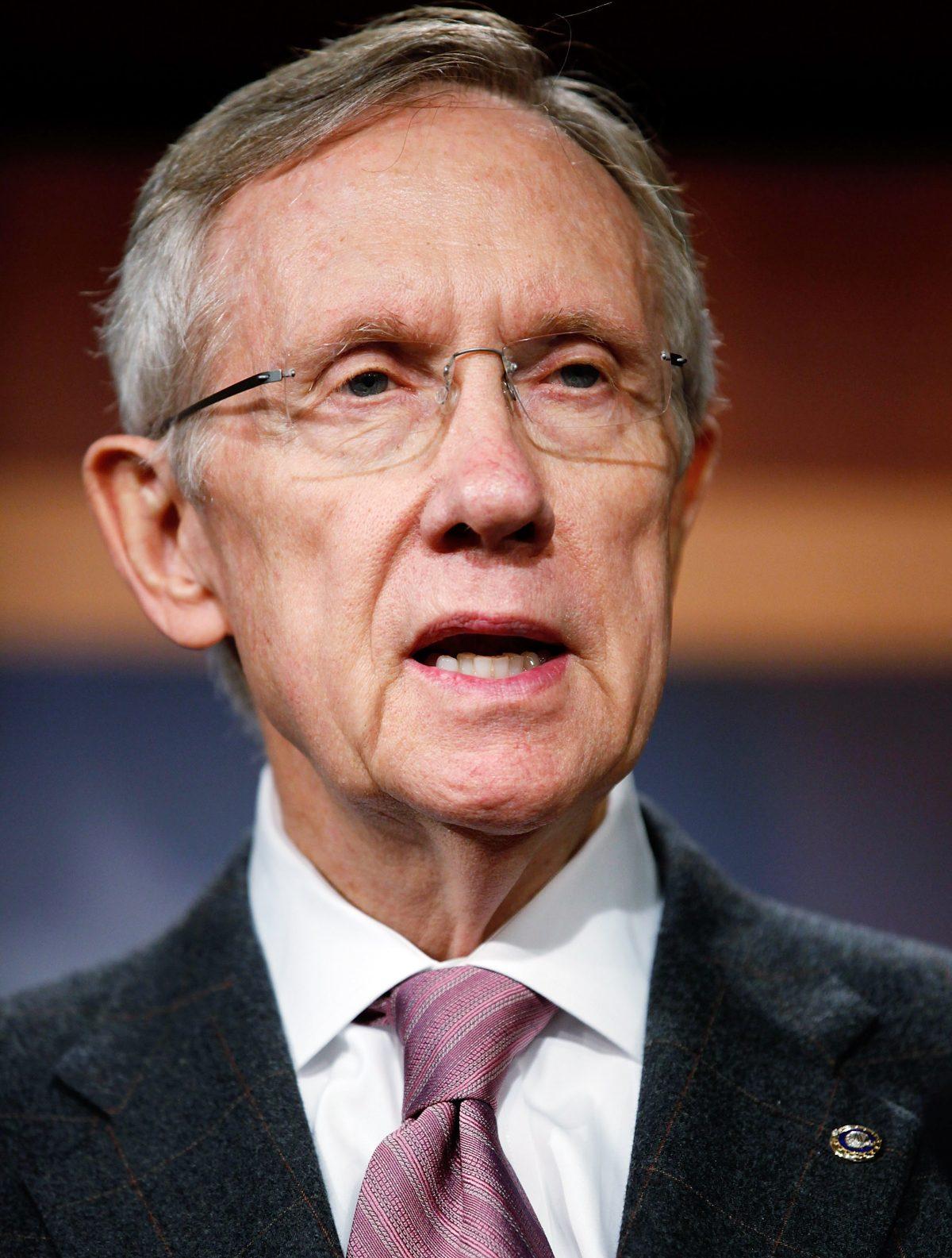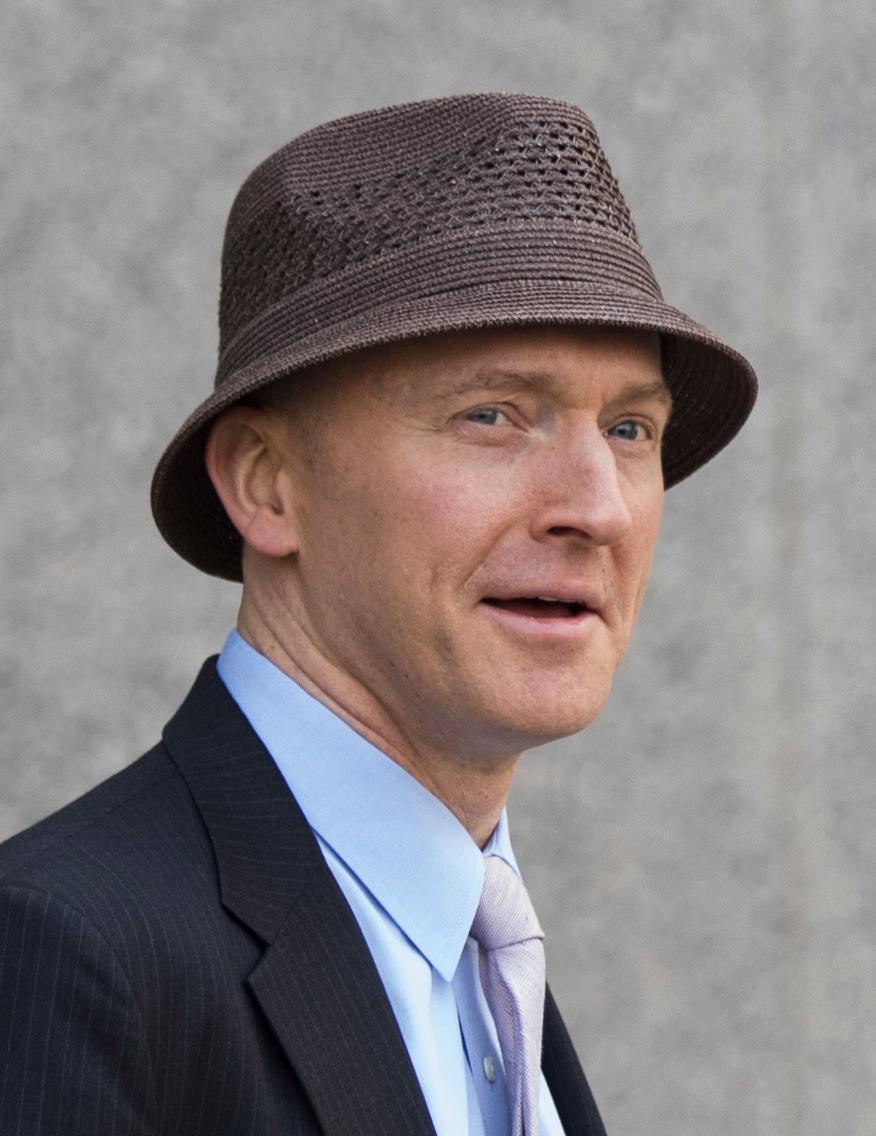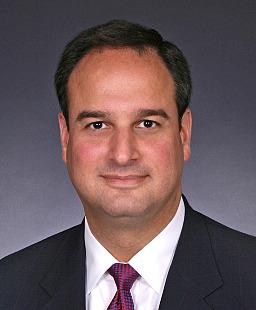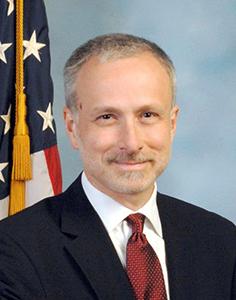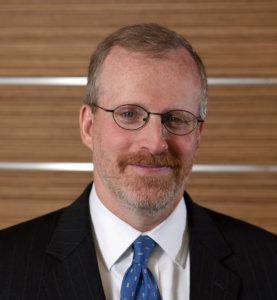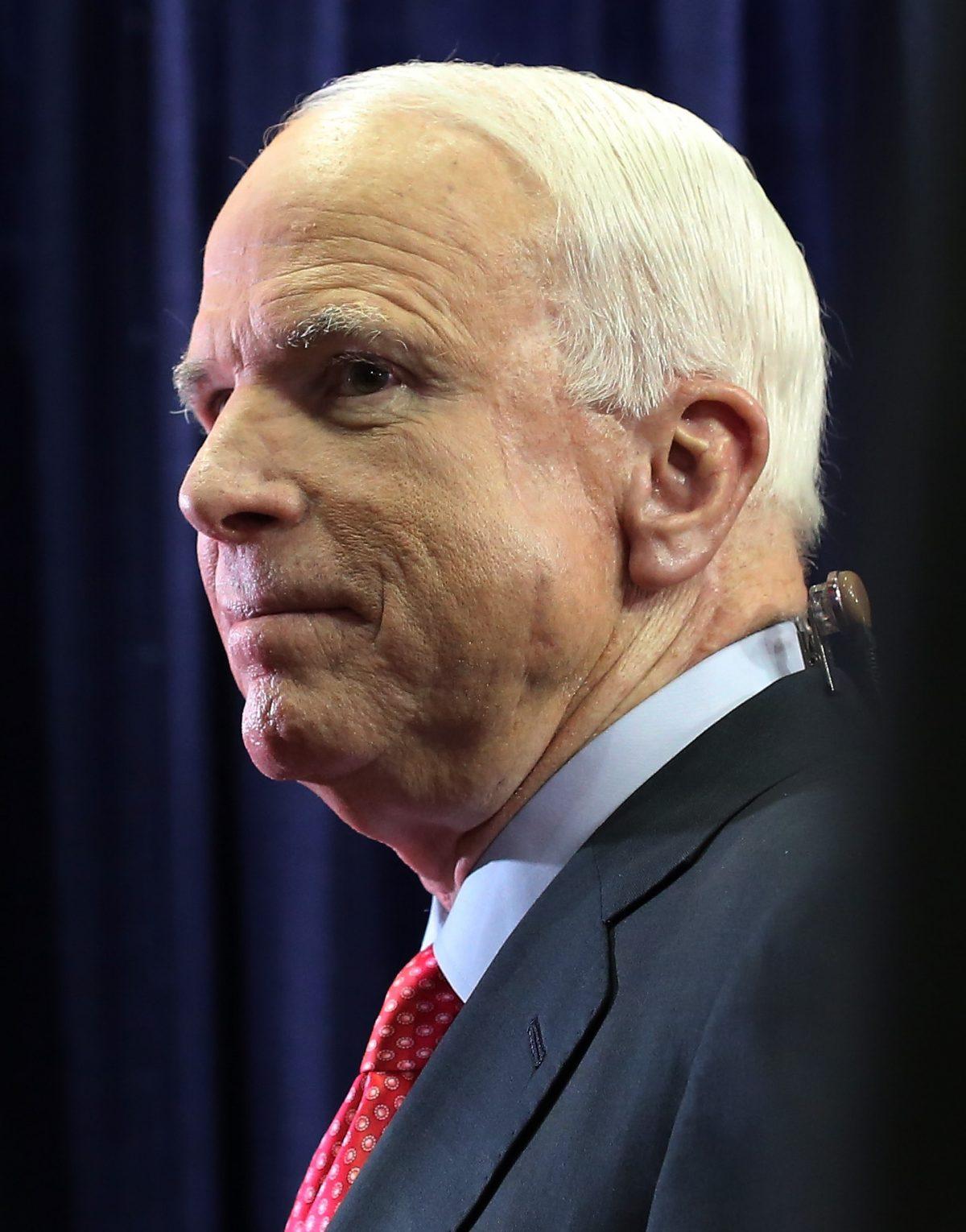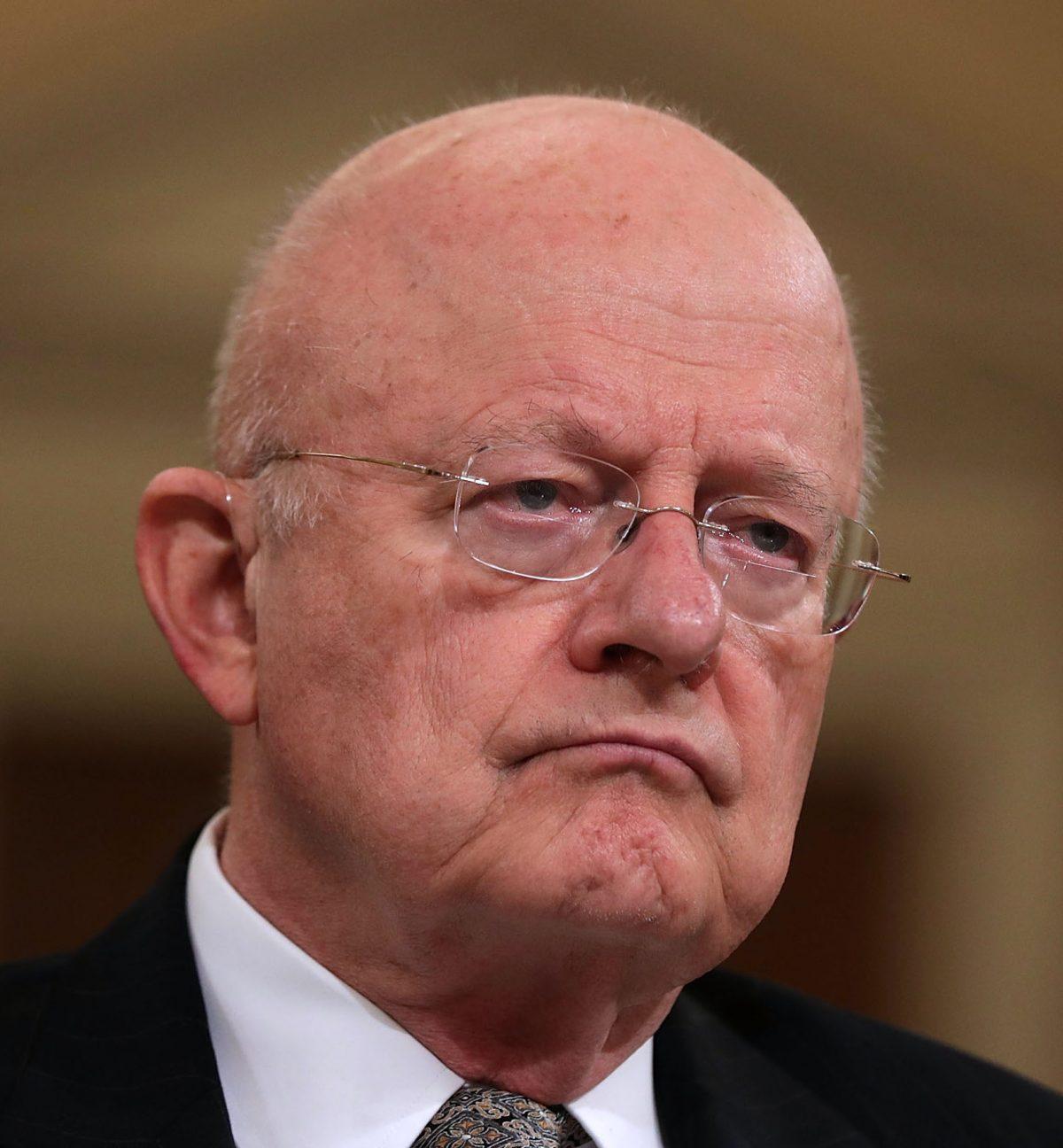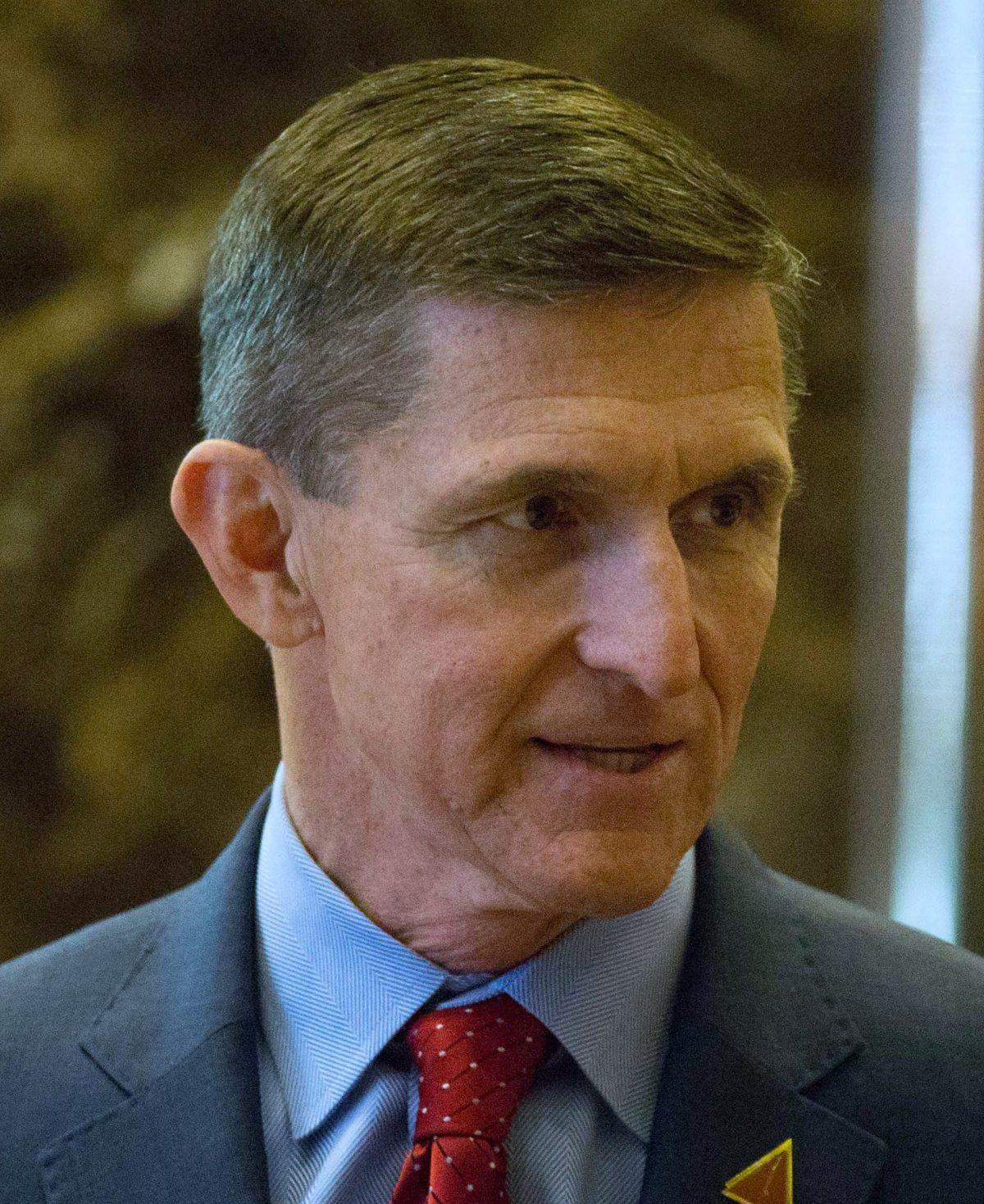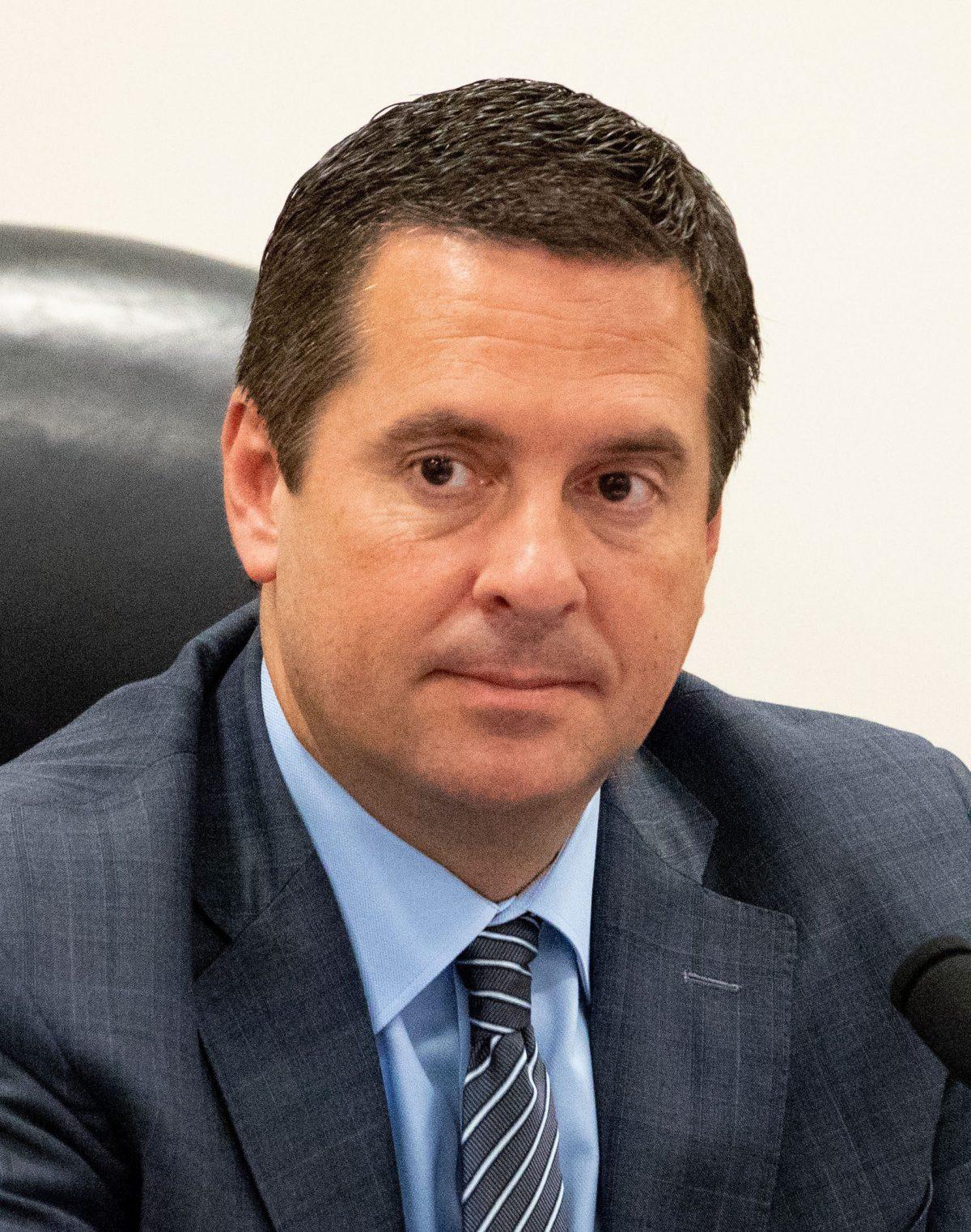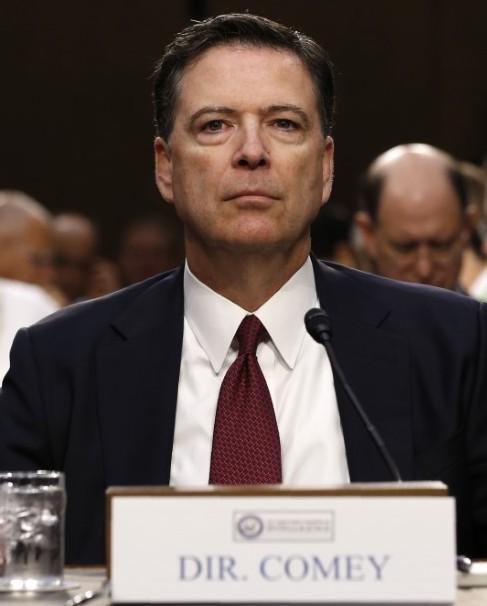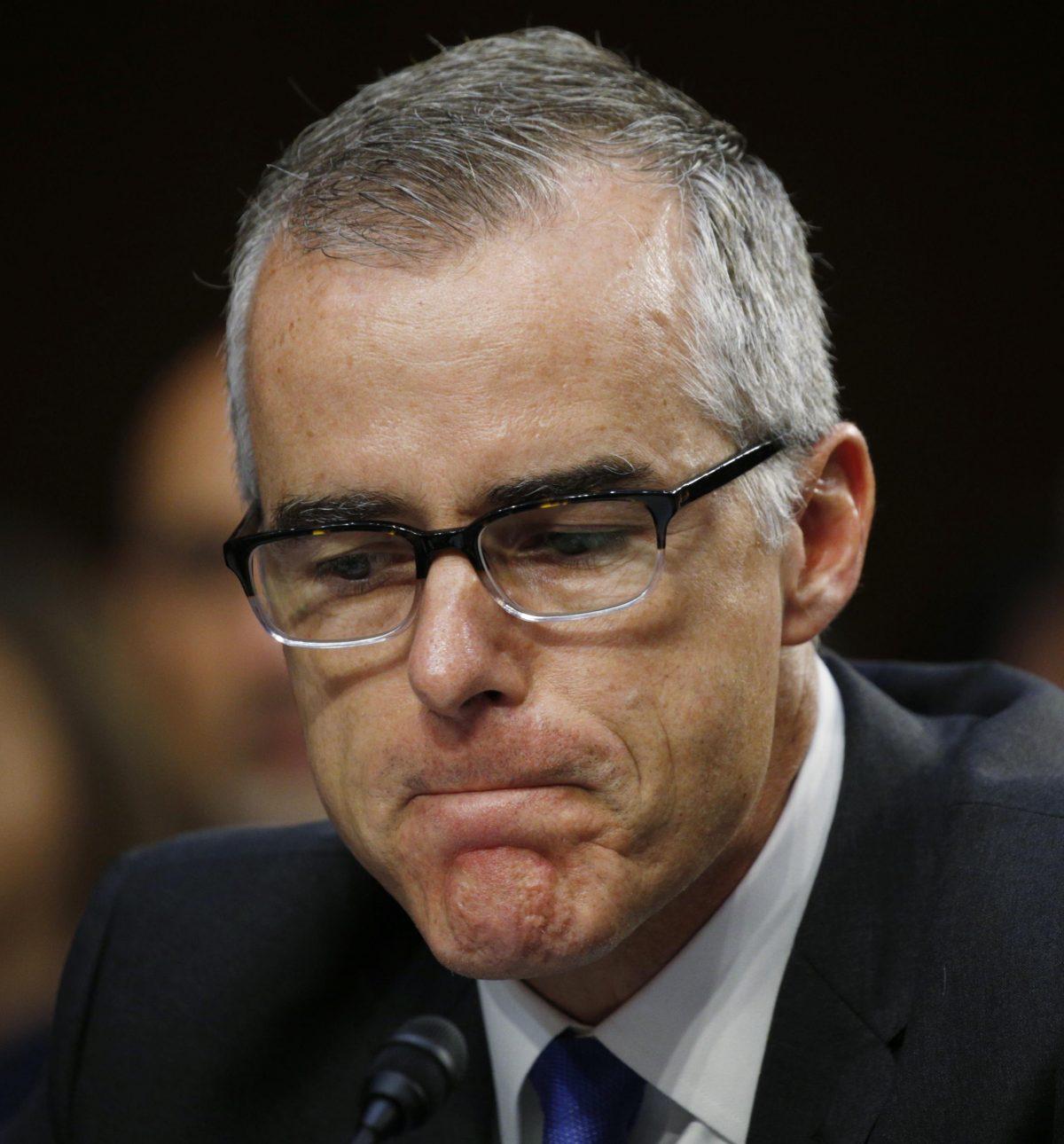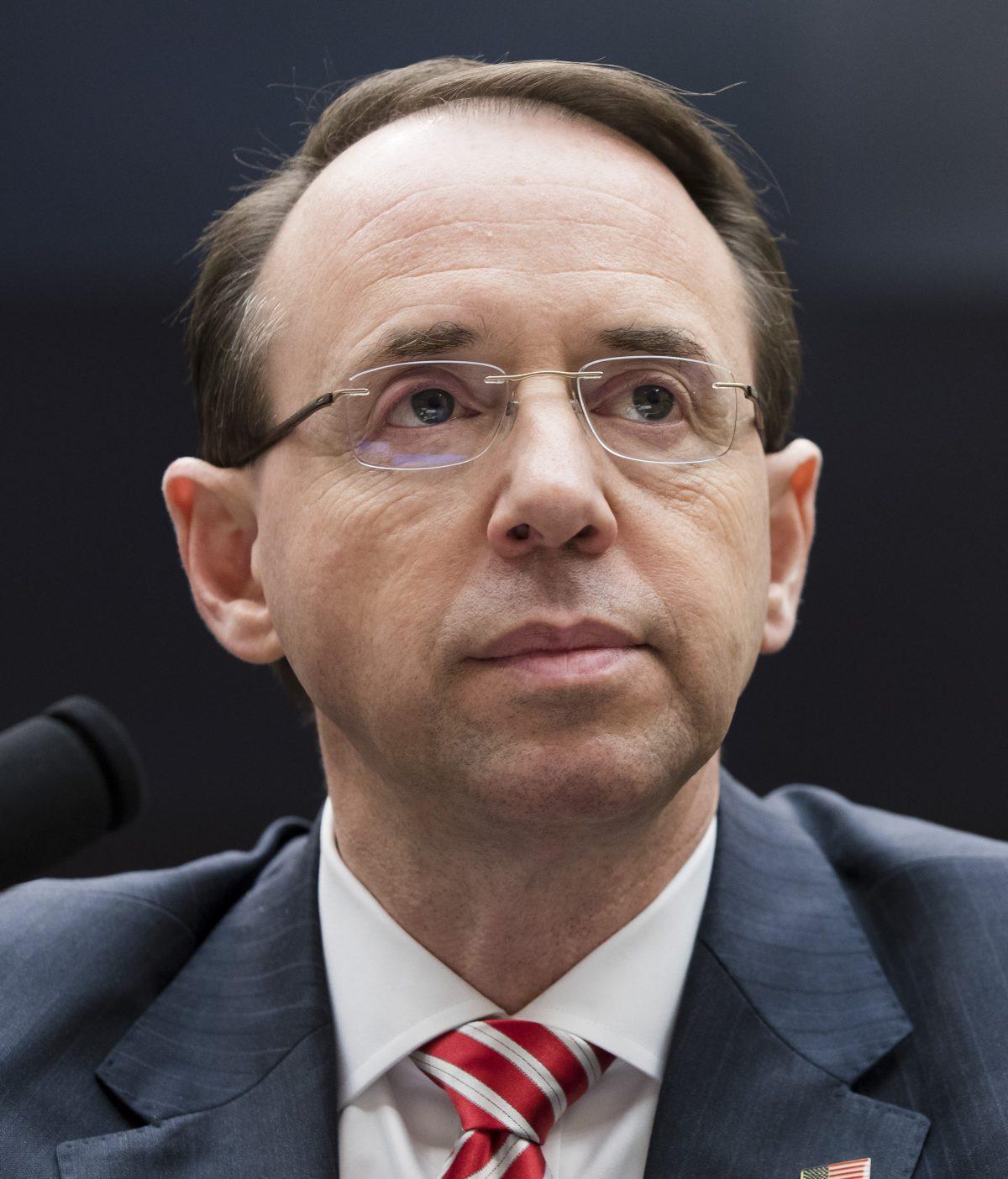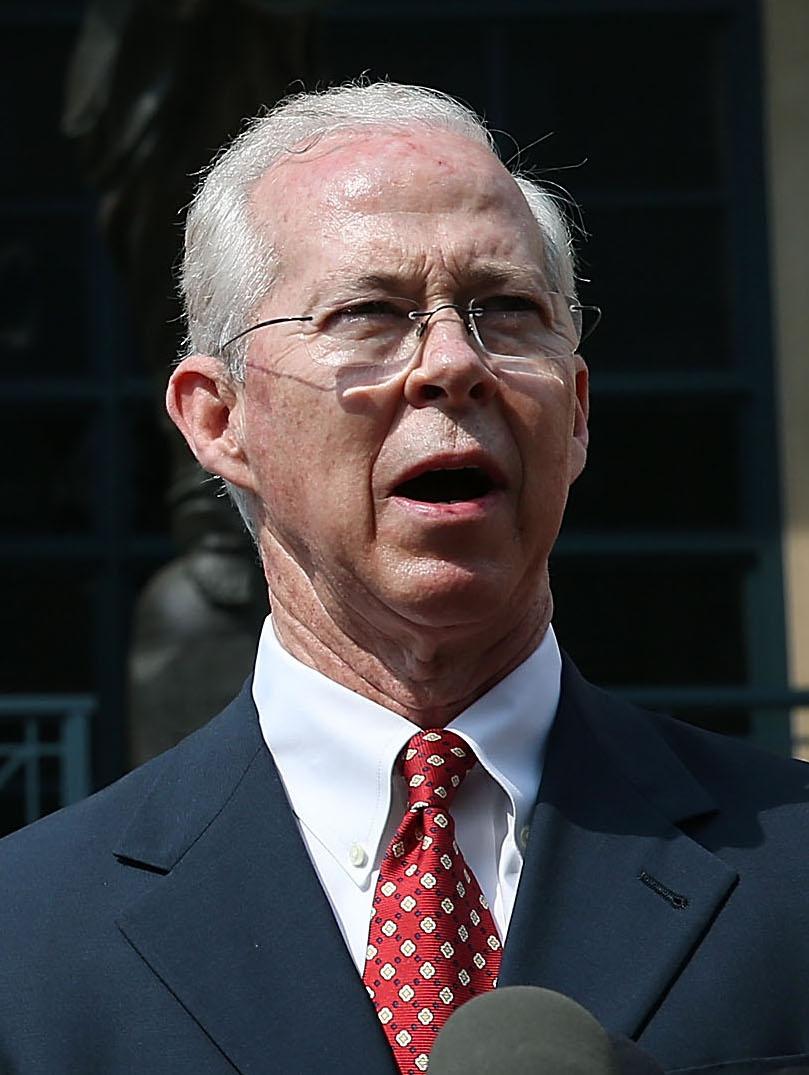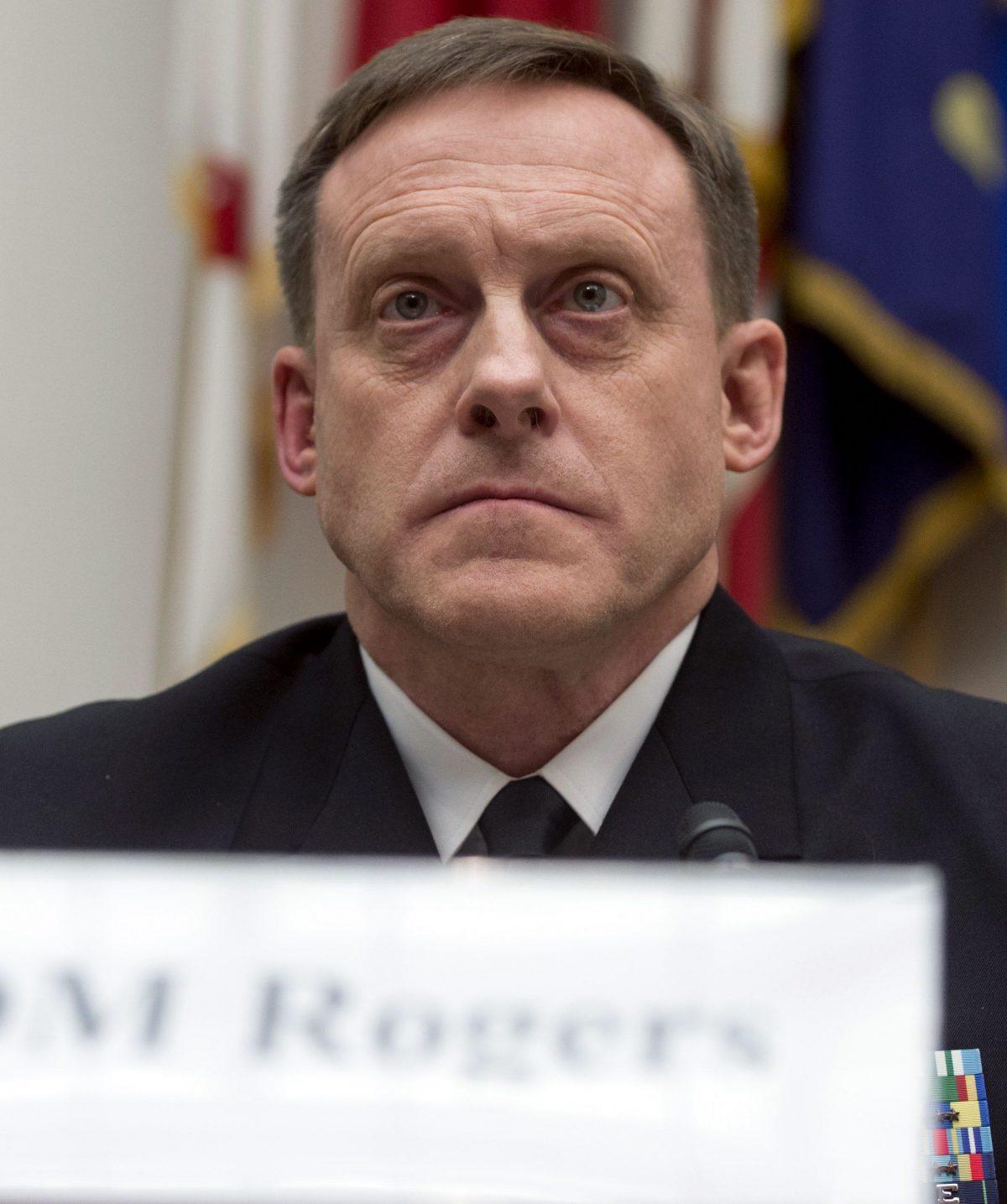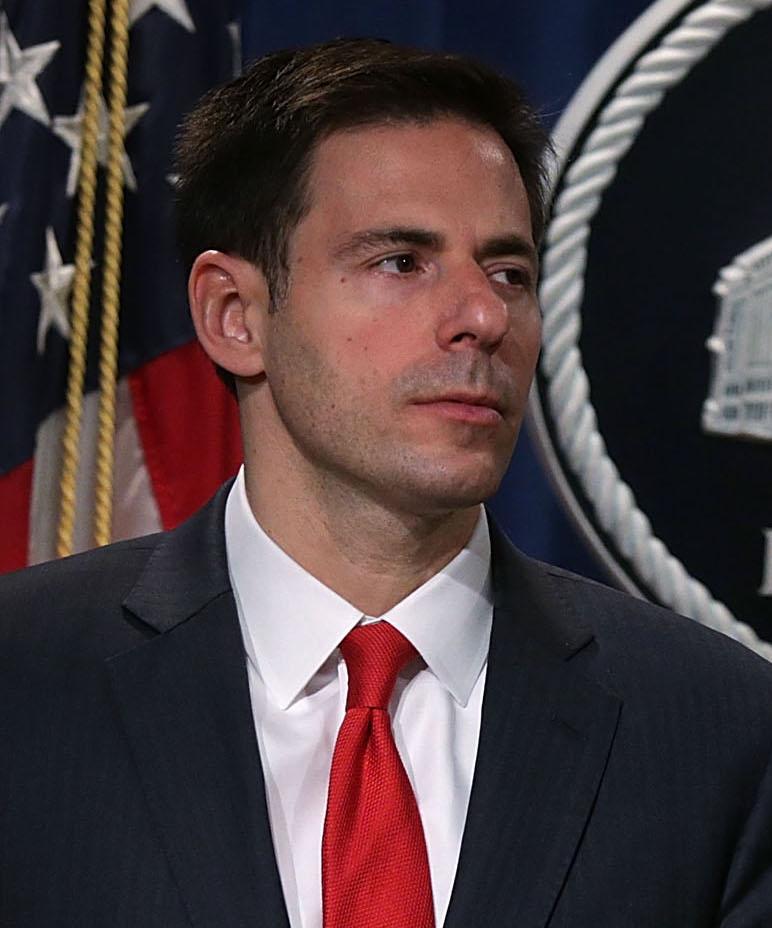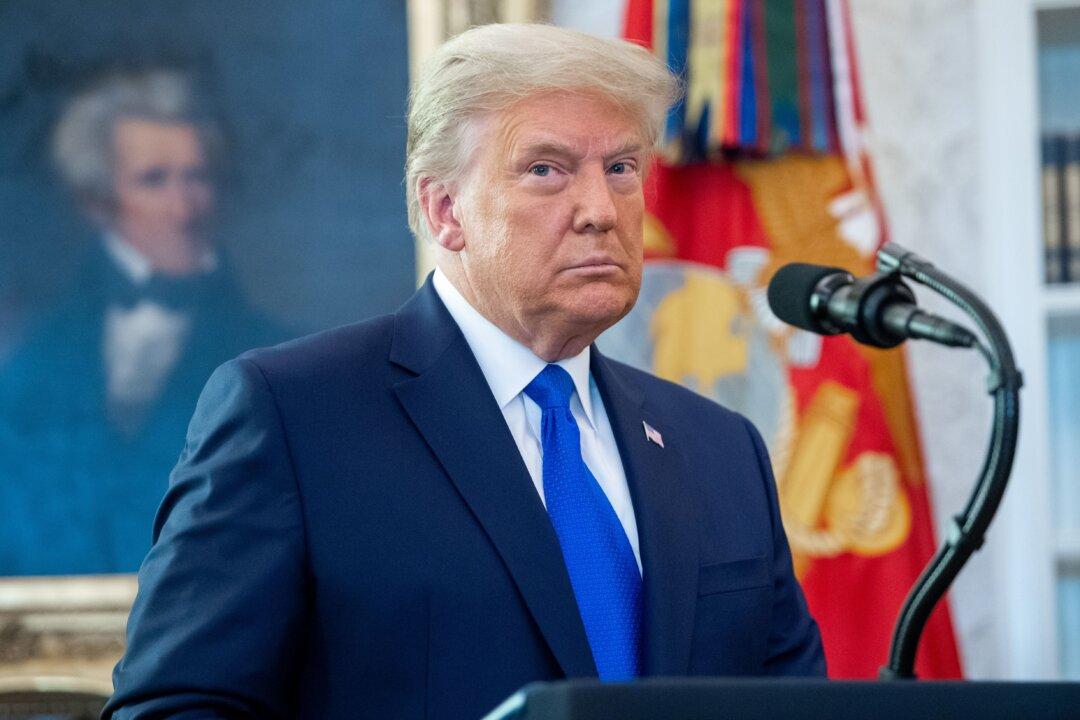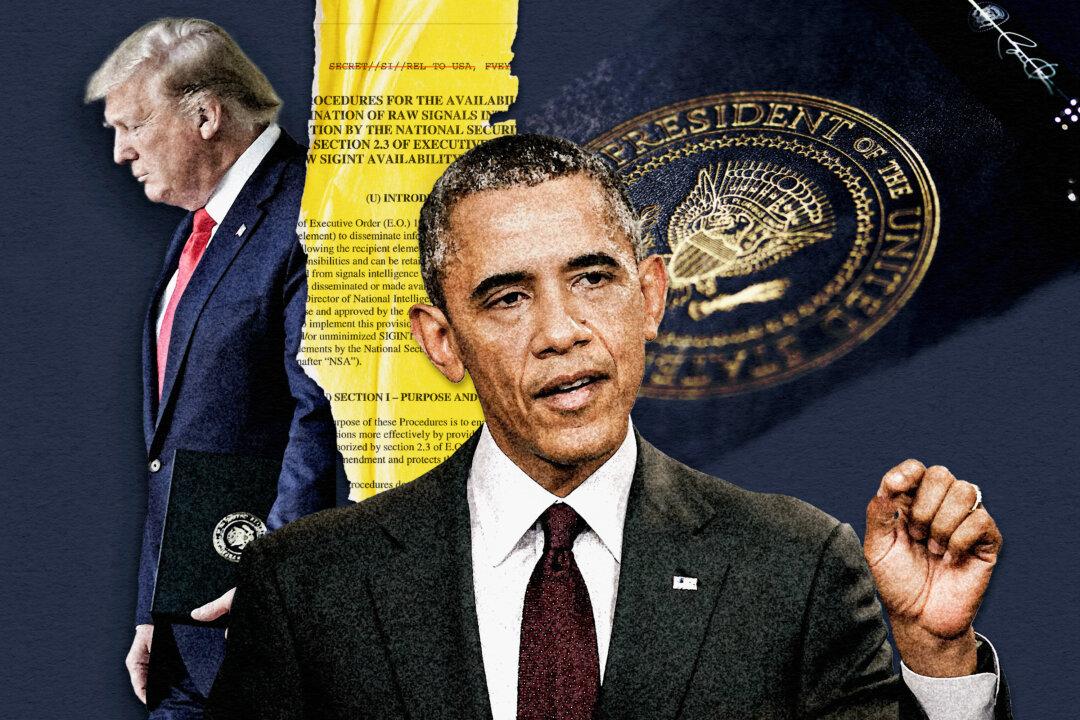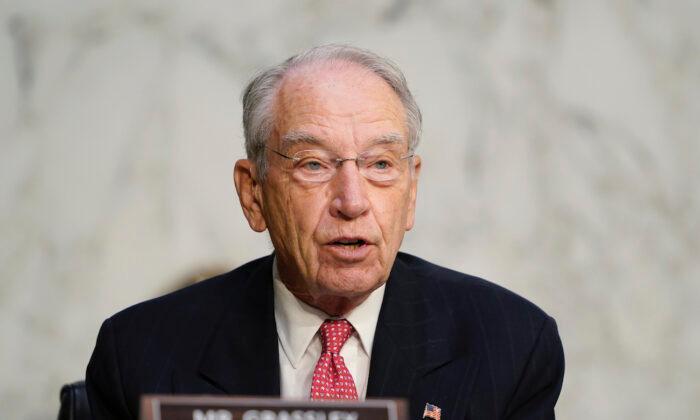Efforts by high-ranking officials in the CIA, FBI, Department of Justice (DOJ), and State Department to portray President Donald Trump as having colluded with Russia were the culmination of years of bias and politicization under the Obama administration.
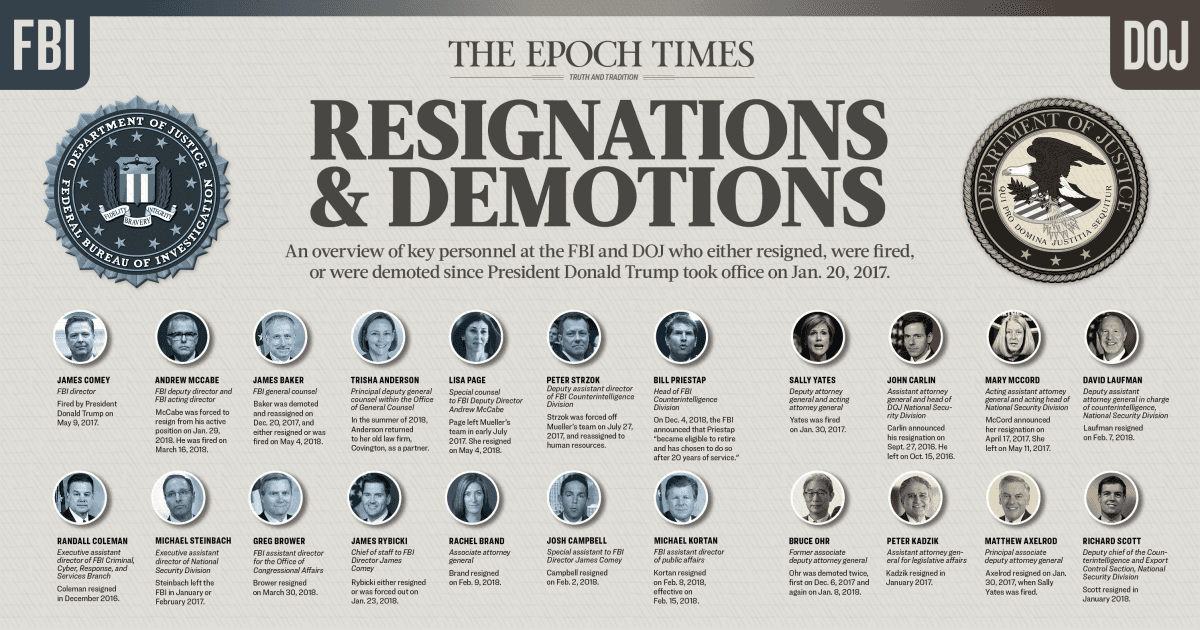
The weaponization of the intelligence community and other government agencies created an environment that allowed for obstruction in the investigation into Hillary Clinton and the relentless pursuit of a manufactured collusion narrative against Trump.
A willing and complicit media spread unsubstantiated leaks as facts in an effort to promote the Russia-collusion narrative.
The Spygate scandal also raises a bigger question: Was the 2016 election a one-time aberration, or was it symptomatic of decades of institutional political corruption?
This article builds on dozens of congressional testimonies, court documents, and other research to provide an inside look at the actions of Obama administration officials in the scandal that’s become known as Spygate.
To understand this abuse of power, it helps to go back to July 2011, when DOJ Inspector General Michael Horowitz was appointed.
“The OLC opinion’s restrictive reading of the IG Act represents a potentially serious challenge to the authority of every Inspector General and our collective ability to conduct our work thoroughly, independently, and in a timely manner. Our concern is that, as a result of the OLC opinion, agencies other than DOJ may likewise withhold crucial records from their Inspectors General, adversely impacting their work.
It is against this backdrop of minimal oversight that Spygate took place.
Ironically, the Clinton email server investigation, known as the “Mid-Year Exam,” originated from a disclosure contained in a June 29, 2015, memo sent by the inspectors general for both the State Department and the Intelligence Community to Patrick F. Kennedy, then-undersecretary of state for management.
The IGs’ memo included an assessment that Clinton’s email account contained hundreds of classified emails, despite Clinton’s claims that there was no classified information present on her server.
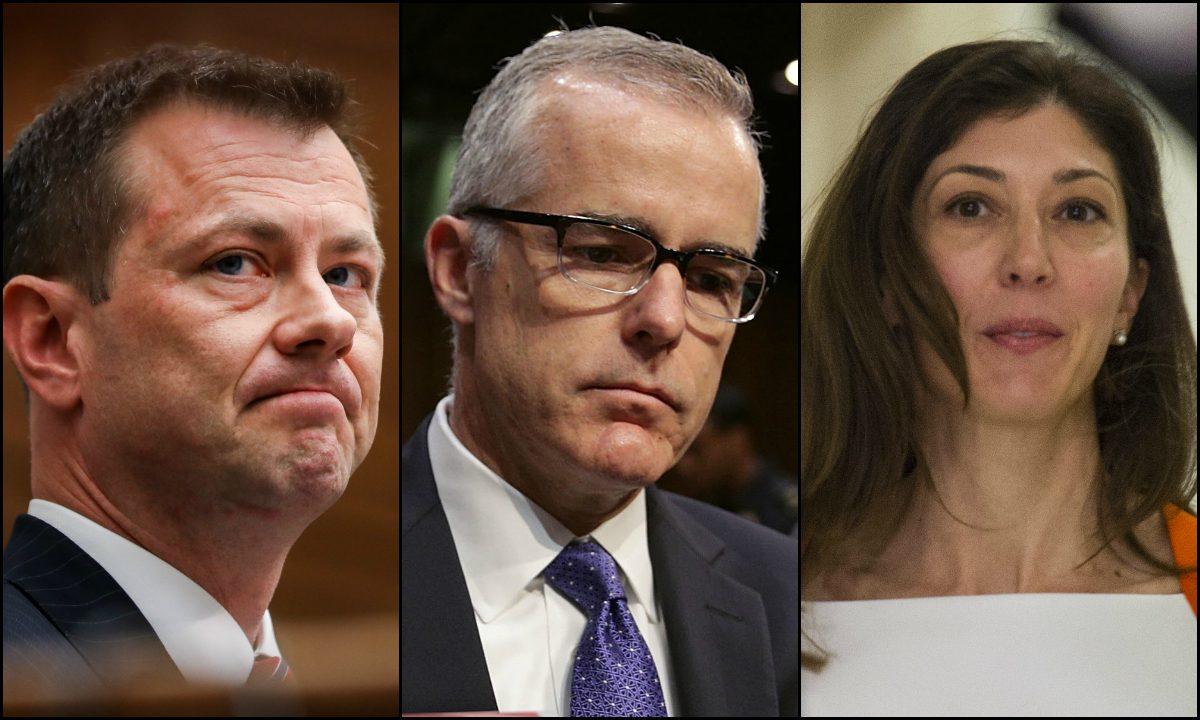
A Hand-Picked Team
At this time, Peter Strzok was an assistant special agent in charge at the FBI’s Washington Field Office. The assistant director in charge at the Washington Field Office during this period was Andrew McCabe, a position he assumed on Sept. 14, 2014.Strzok would follow shortly. Less than a month after McCabe was transferred, FBI headquarters reached out to the Washington Field Office, saying it needed greater staffing and resources “based on what they were looking at, based on some of the investigative steps that were under consideration,” Strzok told congressional investigators in a closed-door hearing on June 27, 2018.
Strzok was one of the agents selected, and in late August 2015, he was assigned to the Mid-Year Exam team and transferred to FBI headquarters. Strzok, in his comments to lawmakers, acknowledged that the newly formed investigative team was largely made up of hand-picked personnel from the Washington Field Office and FBI headquarters.
- Oct. 12, 2015: Louis Bladel was moved to the New York Field Office.
- Dec. 1, 2015: Randall Coleman, assistant director of Counterintelligence, was named as executive assistant director of the Criminal, Cyber, Response, and Services Branch, and was replaced by Bill Priestap.
- Dec. 9, 2015: Charles “Sandy” Kable was moved to the Washington Field Office.
- Feb. 1, 2016: Mark Giuliano retired as FBI deputy director and was replaced by Andrew McCabe.
- Feb. 11, 2016: John Giacalone retired as executive assistant director and was replaced by Michael Steinbach.
- March 2, 2016: Gerald Roberts, Jr. was moved to the Washington Field Office.
It was at this point that FBI lawyer Lisa Page was assigned to McCabe as his special counsel. This was not the first time that Page worked directly for McCabe. James Baker, the FBI’s former general counsel, told congressional investigators that Page had worked for McCabe at various times during McCabe’s career, going back as far as 2013.
By early 2016, the three participants in the infamous “insurance policy” meeting—McCabe, Strzok, and Page—were now in place at the FBI.
In January 2016, Bill Priestap was named as head of the FBI’s Counterintelligence Division, replacing Coleman and inheriting the Clinton email investigation in the process.
According to Priestap, Coleman had “set up a reporting mechanism that leaders of that team would report directly to him, not through the customary other chain of command” in the Clinton email investigation. Priestap, who said he didn’t know why Coleman had “set it up,” kept the chain of command in place when he assumed Coleman’s position in January 2016.
This new structure resulted in some unusual reporting lines that went outside normal chains of command. Strzok, who would not normally fall under Priestap’s oversight, was now reporting directly to him.
As Priestap described it, the team involved in the Clinton investigation comprised three different but intertwined elements: the primary team, the filter team, and the senior leadership team.
The primary team was small, consisting only of Strzok, FBI analyst Jonathan Moffa, and, to varying degrees, filter team leader Rick Mains and FBI lawyer Sally Moyer. Mains reported to Strzok and Moffa, who in turn, along with Moyer, provided briefings to Priestap.
Below Strzok and Moffa was the day-to-day investigative “filter” team of approximately 15 FBI agents and analysts that was overseen by Mains, a supervisory special agent.
The senior leadership team was more fluid, consisting of higher-level FBI officials who provided briefings and updates to Comey and/or McCabe. In addition to Priestap, Strzok, and Moffa, frequent attendees included Moyer, Page, Deputy General Counsel Trisha Anderson, chief of staff Jim Rybicki, and General Counsel James Baker.
Priestap Left in the Dark
Priestap, who testified that he was unaware of the frequency of meetings between McCabe, Strzok, and Lisa Page, seems to have been kept in the dark regarding many of the actions taken by Strzok, who appeared to be exercising significant investigative control. Priestap was asked about this by congressional investigators during a June 5, 2018, testimony: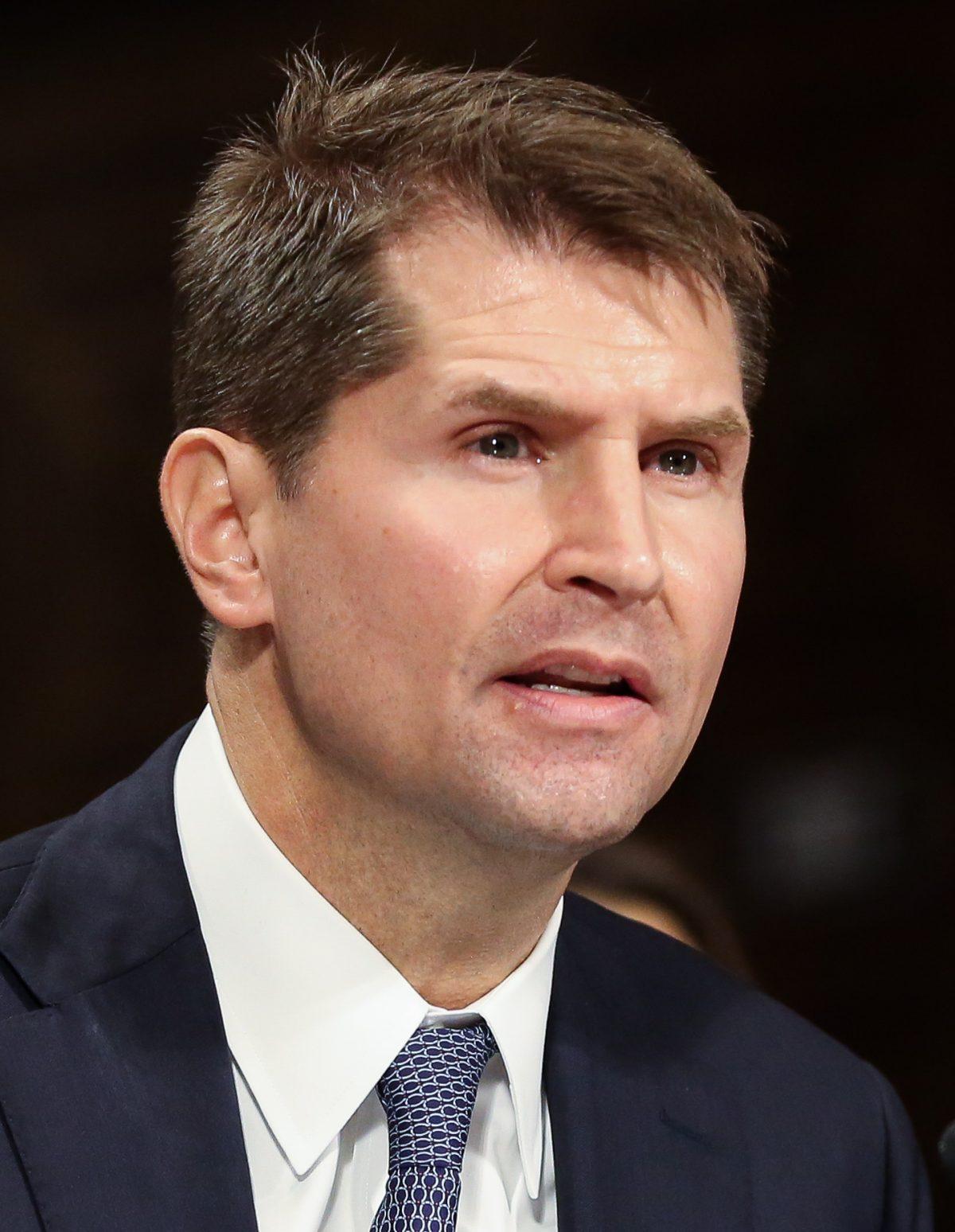
Additionally, Page often circumvented the established chain of command, not only with McCabe, for whom she reportedly served as a conduit for Strzok, but also with Baker. Additionally, there were concerns that Page bypassed both the executive assistant director for the National Security Branch—first Giacalone, then Steinbach—and Priestap, the head of counterintelligence. Anderson, the No. 2 lawyer, admitted in her testimony to congressional investigators that she had been aware of these concerns, saying, “Neither of them personally complained to me, but I was aware of their concerns.”
According to Anderson, McCabe was aware of the ongoing concerns regarding Page’s circumventions, but it appears that nothing was done to address them:
DOJ Prevents ‘Gross Negligence’ Charges
By the spring of 2016, the Clinton email investigation was already winding down. This was due in large part to the fact that the DOJ, under Attorney General Loretta Lynch, had decided to set an unusually high threshold for the prosecution of Clinton, effectively ensuring from the outset that she would not be charged.In order for Clinton to be prosecuted, the DOJ required the FBI to establish evidence of intent—even though the gross negligence statute explicitly does not require this.
This meant that the FBI would have needed to find a smoking gun, such as an email or an admission made during FBI questioning, revealing that Clinton or her aides knowingly set up the private email server to send classified information.
According to Page, the DOJ played a far larger role in the Clinton investigation than previously had been known:
“Everybody talks about this as if this was the FBI investigation, and the truth of the matter is there was not a single step, other than the July 5th statement, there was not a single investigative step that we did not do in consultation with or at the direction of the Justice Department,” Page told congressional investigators on July 13, 2018.
CIA Director Instigates Trump Investigation
As the Clinton investigation wound down, interest from the intelligence community in the Trump campaign was ramping up. Sometime in 2015, it appears former CIA Director John Brennan established himself as the point man to push for an investigation into the Trump campaign. Using a combination of unofficial foreign intelligence compiled by contacts, colleagues, and associates—primarily from the UK, but also from other Five Eyes members, such as Australia—Brennan then fed this information to the FBI. Brennan stated this fact repeatedly during a May 23, 2017, congressional testimony:“I made sure that anything that was involving U.S. persons, including anything involving the individuals involved in the Trump campaign, was shared with the [FBI].”
“I was aware of intelligence and information about contacts between Russian officials and U.S. persons that raised concerns in my mind about whether or not those individuals were cooperating with the Russians, either in a witting or unwitting fashion, and it served as the basis for the FBI investigation to determine whether such collusion [or] cooperation occurred.”
In late 2015, Britain’s Government Communications Headquarters (GCHQ) was involved in collecting information regarding then-candidate Trump and transmitting it to the United States. The GCHQ is the UK equivalent of the U.S. National Security Agency (NSA).
While GCHQ was gathering intelligence, low-level Trump campaign foreign-policy adviser George Papadopoulos appears to have been targeted, after a series of highly coincidental meetings.
Most of these meetings with Papadopoulos—whose own background and reasons for joining the Trump campaign remain suspicious—occurred in the first half of 2016.
Maltese professor Josef Mifsud, Australian diplomat Alexander Downer, FBI informant Stefan Halper, and officials from the UK’s Foreign and Commonwealth Office (FCO) all crossed paths with Papadopoulos—some repeatedly so.
Mifsud, who introduced Papadopoulos to a series of Russian contacts, appears to have more connections with Western intelligence than with Russian intelligence.
Information allegedly relayed by Papadopoulos during the Downer meeting—that the Russians had damaging information on Clinton—appears nearly identical to claims later contained in the first memo from former MI6 spy and dossier author Christopher Steele that the FBI obtained in early July 2016.
Downer’s conversation with Papadopoulos was reportedly disclosed to the FBI on July 22, 2016, through Australian government channels, although it may have come directly from Downer himself.
Details from the conversation between Downer and Papadopoulos were then used by the FBI to open its counterintelligence investigation on July 31, 2016.
As this foreign intelligence—unofficial in nature and outside of any traditional channels—was gathered, Brennan began a process of feeding his gathered intelligence to the FBI. Repeated transfers of foreign intelligence from the CIA director pushed the FBI toward the establishment of a formal counterintelligence investigation.
Fusion GPS and the Steele Dossier
Meanwhile, another less official effort began. Information paid for by the Democratic National Committee (DNC) and the Clinton campaign targeting Trump made its way to the highest levels of the FBI and the State Department, with a sophisticated strategy relying on the personal connections of hired operatives.At the center of the multi-pronged strategy to disseminate the information were Fusion GPS co-founder Glenn Simpson and former British spy Steele.
Steele’s firm, Orbis Business Intelligence, was retained by Fusion GPS during the period between June and November 2016. During this time, Steele produced 16 memos, with the last memo dated Oct. 20, 2016. There is one final memo that Steele wrote on Dec. 13 at the request of Sen. John McCain (R-Ariz.).
Steele provided Fusion GPS with something that Simpson’s firm was lacking: access to individuals within the FBI and the State Department. These contacts could be traced back to at least 2010, when Steele had provided assistance in the FBI’s investigation into FIFA over concerns that Russia might have been engaging in bribery to host the 2018 World Cup.
Gaeta was later identified as Steele’s FBI handler, in a July 16, 2018, congressional testimony before the House Judiciary and Oversight committees by Page.
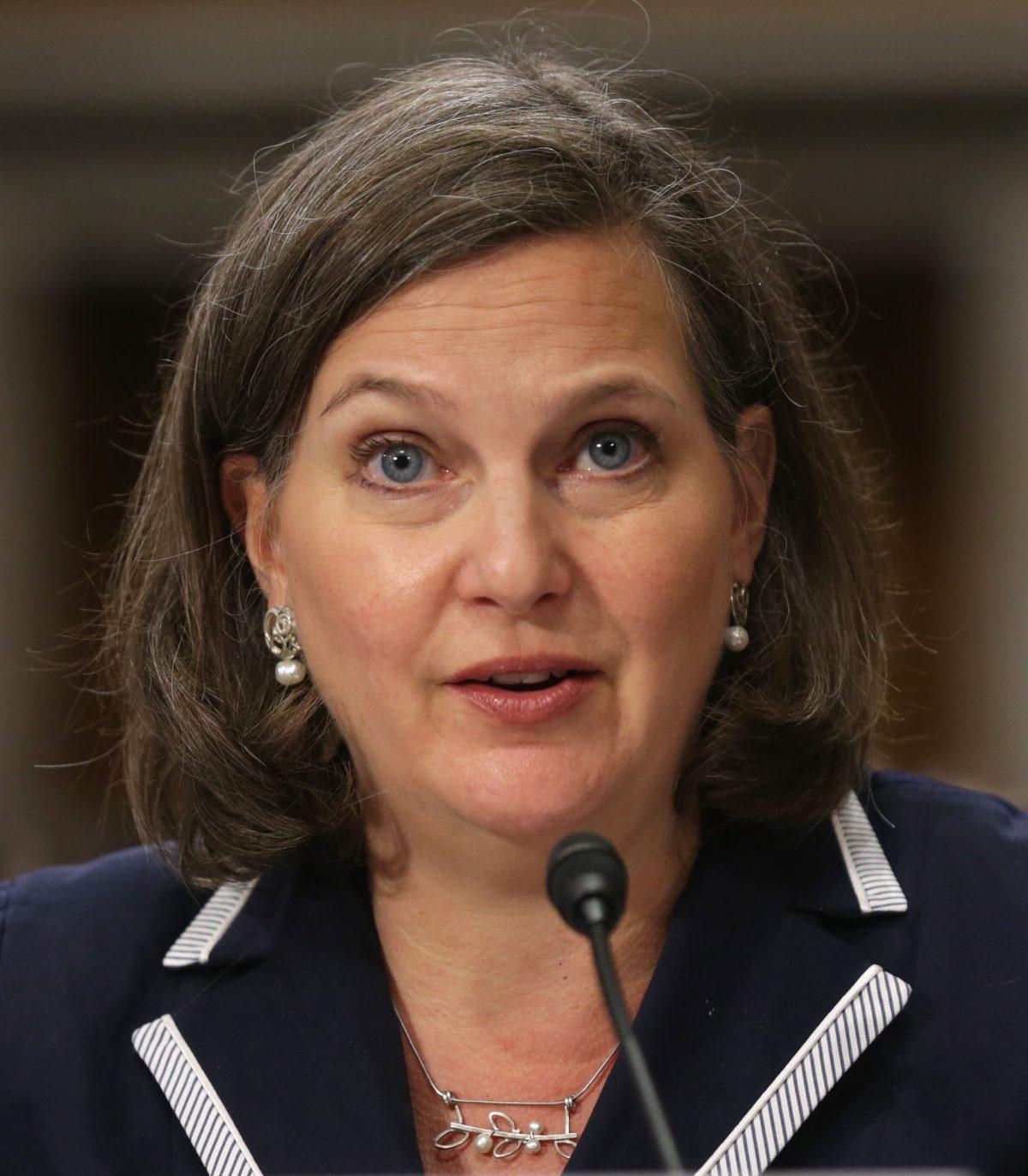
On July 5, 2016, Gaeta traveled to London and met with Steele at the offices of Steele’s firm, Orbis. At some point in early July, Steele passed his initial report to Nuland and the State Department. Nuland later said these documents were passed on at some point to both the FBI and then-Secretary of State John Kerry.
Former CIA Contractor Worked for Fusion GPS
Notably, eight months before Fusion GPS hired Christopher Steele, Simpson had hired Nellie Ohr, the wife of then-Associate Deputy Attorney General Bruce Ohr, to work for his firm as a researcher in October 2015. It was at this time that Fusion GPS was retained by the Washington Free Beacon to engage in research on the Trump campaign.Prior to joining Fusion GPS, Nellie had worked as an independent contractor for an internal open-source division of the CIA, Open Source Works, from 2008 to at least June 2010; it appears likely she remained in that role into 2014.
Nellie told congressional investigators, in her Oct. 19, 2018, closed-door testimony, that part of her work for Fusion GPS was to research the Trump 2016 presidential campaign, including campaign associate Carter Page, early campaign supporter Lt. Gen. Michael Flynn, and campaign manager Paul Manafort, as well as Trump’s family members, including some of his children.
Additionally, email communications between her and Bruce Ohr show that she routinely sent her husband at the DOJ articles on Russia—most carrying a similar negative slant. The emails continued through the duration of Nellie’s employment with Fusion GPS and usually contained a brief, often one-line comment from Nellie.
In her testimony, Nellie described her work as online open-source efforts that utilized “Russian sources, media, social media, government, you know, business registers, legal databases, all kinds of things.” Ohr said that she would “write occasional reports based on the open-source research that I described about Donald Trump’s relationships with various people in Russia.”
The work Nellie conducted for Fusion GPS matches the same skill set used when she worked for Open Source Works, which is a division within the CIA that uses open-source information to produce intelligence products.
When asked how she came to be hired by Fusion GPS and who had approached her, Nellie responded, “Nobody approached me,” telling investigators that it was she who had initiated contact and approached Fusion GPS after reading an article on Simpson.
Nellie would continue to work for Fusion GPS until September 2016. By this time, Simpson and Steele already had started working on pushing the Steele dossier into the FBI.
Bruce Ohr Becomes a Conduit
Nearly a month after Gaeta brought back the reports that Steele provided in London, Simpson and Steele decided to pursue a new channel into the FBI through Bruce Ohr. Bruce had known Steele since at least 2007, when they met during an “official meeting” while Steele was still employed by the British government as an MI6 agent. Steele had already been in contact with Bruce via email in early 2016. Notably, most of these prior communications appeared to discuss Russian oligarch Oleg Deripaska and his ongoing efforts to obtain a U.S. visa.The timing of the July 30 breakfast meeting is of particular note, as the FBI’s counterintelligence investigation, “Crossfire Hurricane,” was formally opened the following day, on July 31, 2016, by FBI agent Peter Strzok.
Steele also referenced Deripaska’s business dealings with Trump campaign chairman Paul Manafort and foreign policy adviser Carter Page’s meetings in Moscow.
Lastly, Bruce noted that Steele told him he had been in contact with the FBI but now had additional reports. “Chris Steele had provided some reports to the FBI, I think two, but that Glenn Simpson had more,” he said.
Immediately following the Ohrs’ breakfast meeting with Steele, Bruce Ohr reached out to FBI Deputy Director McCabe and the two met in McCabe’s office—sometime between July 30 and the first days of August. Also present at this meeting was FBI lawyer Page, who had previously worked for Bruce Ohr at the DOJ, where he was her direct supervisor for five to six years.
Bruce Ohr would later testify that during the July/August meeting, he told McCabe that his wife, Nellie, worked for Fusion, noting, “I wanted the FBI to be aware of any possible bias.” FBI General Counsel Baker, who reviewed a portion of the Foreign Intelligence Surveillance Act (FISA) application to spy on Trump campaign adviser Carter Page—which relied in part on the information from Steele—told congressional investigators that he was never told of Ohr’s concerns regarding possible bias and conflicts of interest.
On Aug. 15, 2016, a week or two following Bruce Ohr’s meeting with McCabe, Strzok would send the now-infamous “insurance policy” text referencing McCabe to Lisa Page:
“I want to believe the path you threw out for consideration in Andy’s office – that there’s no way he gets elected – but I’m afraid we can’t take that risk. It’s like an insurance policy in the unlikely event you die before you’re 40.”
On Aug. 22, Bruce Ohr had a meeting with Simpson. Ohr would later discuss that meeting during his testimony:
“I don’t know exactly what Chris Steele was thinking, of course, but I knew that Chris Steele was working for Glenn Simpson, and that Glenn might have additional information that Chris either didn’t have or was not authorized to prevent [present], give me, or whatever.”
Brennan’s Briefings to the Gang of Eight
During her testimony, FBI lawyer Lisa Page was questioned by Rep. Mark Meadows (R-N.C.) in relation to an Aug. 25, 2016, text message that read, “What are you doing after the CH brief?” CH almost certainly referred to Crossfire Hurricane.
Lisa Page then was asked about an event that took place on the same day as the “CH brief”—a briefing provided by Brennan to then-Senate Minority Leader Harry Reid:
“You give a brief on August the 25th. Director Brennan is giving a brief. It’s not a Gang of Eight brief. It is a one-on-one, from what we can tell, a one-on-one briefing with Harry Reid at that point.”
According to Meadows, Brennan briefed Reid on the Steele dossier:
“We have documents that would suggest that in that briefing the dossier was mentioned to Harry Reid and then obviously we’re going to have to have conversations. Does that surprise you that Director Brennan would be aware [of the dossier]?”
Lisa Page appeared genuinely surprised that Brennan would have been aware of the dossier’s existence at this early point, telling Meadows: “The FBI got this information from our source. If the CIA had another source of that information, I am neither aware of that nor did the CIA provide it to us if they did.”
She elaborated further: “As of August of 2016, I don’t know who Christopher Steele is. I don’t know that he’s an FBI source. I don’t know what he does. I have never heard of him in all of my life.”
This claim by Page seems incongruous when viewed against Bruce Ohr’s testimony that he met with Page and McCabe in the first days of August following his July 30, 2016, breakfast with Steele:
“My initial meeting was with Mr. McCabe and with Lisa Page.
“I was telling them about what I was hearing from Chris Steele.”
Meanwhile, Brennan’s briefing prompted Reid to write not one but two letters to Comey. Both demanded that Comey commence an investigation, with the details to be made public.
“We got the reporting on Sept 19. Looks like [redacted] got it early August.”
Steele had produced eight reports from June 20, 2016, through the end of August 2016 (there also is one undated report included in the dossier). No further reports were generated by Steele until Sept. 14, when he suddenly wrote three separate memos in one day. One of the memos referenced a Russian bank named Alfa Bank, misspelled as “Alpha” in his memo. Steele’s sudden burst of productivity was likely done in preparation for his Sept. 19 meeting in Rome with the FBI.
“Through the so-called Gang-of-Eight process we kept Congress apprised of these issues as we identified them. Again, in consultation with the White House, I personally briefed the full details of our understanding of Russian attempts to interfere in the election to congressional leadership.
The Carter Page FISA Warrant
As the dossier was making its way into the FBI, the agency began its preparations to obtain a FISA warrant on Trump campaign adviser Carter Page, who was surveilled under Title I of the Foreign Intelligence Surveillance Act.
According to Baker’s testimony, it appears that the FBI began to set its sights on Carter Page in the summer of 2016. When asked how he had first gained knowledge of the FBI’s intention to pursue a FISA warrant on Carter Page, Baker testified that it came through his familiarity with the FBI’s investigation:
- Madeleine Albright (former U.S. secretary of state)
- Vin Weber (Republican Party strategist and former congressman)
- Peter Ammon (German ambassador to the UK)
- Sir Richard Dearlove (former head of MI6 and Steele’s former boss)
- Bridget Kendall (BBC diplomatic correspondent and the next master of Peterhouse College)
- Sir Malcolm Rifkind (former defense and foreign secretary)
Halper, who has been outed as an FBI informant, stayed in contact with Carter Page for the next 14 months, severing ties exactly as the final FISA warrant on Page expired.
Trisha Anderson, the principal deputy general counsel for the FBI and head of the bureau’s National Security and Cyber Law Branch, approved the application for a warrant to spy on Carter Page before it went to FBI Director James Comey.
According to Anderson, pre-approvals for the Carter Page FISA warrant were provided by both McCabe and Deputy Attorney General Sally Yates, before the FISA application was ever presented to Anderson for review.
“[M]y boss and my boss’ boss had already reviewed and approved this application. And, in fact, the Deputy Attorney General, who had the authority to sign the application, to be the substantive approver on the FISA application itself, had approved the application. And that typically would not have been the case before I did that,” said Anderson.
The unusual preliminary reviews and approvals from both McCabe and Yates appear to have had a substantial impact on the normal review process, leading other individuals like Anderson to believe that the warrant application was more vetted than it really was.
Anderson also testified that she had not read the Carter Page FISA application prior to signing off on it and passing it along to Comey for the final FBI signature. According to FBI lawyer Sally Moyer, the underlying Woods file (a document that provides facts supporting the allegations made in a FISA application) was only read by the originating agent and the supervisory special agent in the field. Moyer also noted that the Woods file relating to the Page FISA had not been reviewed or audited by anyone.
The Carter Page FISA application was largely reliant on the Steele dossier, which was unverified at the time of its submission to the FISA court and remains unverified by the FBI to this day. Circular reporting, provided by Steele himself, was used as corroboration of the dossier. Additionally, Trump campaign adviser George Papadopoulos, whose conversation with Australian diplomat Alexander Downer was used to open the FBI’s July 31, 2016, counterintelligence investigation, is referenced in the FISA, yet there “is no evidence of any cooperation or conspiracy between Page and Papadopoulos,” according to a House Intelligence Committee memo.
A Perkins Coie Partner and Alfa Bank Allegations
On Sept. 19, shortly after Steele completed his latest three memos, FBI General Counsel James Baker met with Perkins Coie partner Michael Sussmann, the lawyer the DNC turned to on April 28, 2016, after discovering the alleged hacking of their servers.
Sussmann, who sought out the meeting, presented Baker with documents that Baker described as “a stack of material I don’t know maybe a quarter inch half inch thick something like that clipped together, and then I believe there was some type of electronic media, as well, a disk or something.”
The information that Sussmann gave to Baker was related to what Baker described as “a surreptitious channel of communications” between the Trump Organization and “a Russian organization associated with the Russian Government.”
Baker was describing alleged communications between Alfa Bank and a server in the Trump Tower. The allegations, which were investigated by the FBI and proven to be false, were widely covered in the media.
Just four days earlier, on Sept. 14, Steele mentioned Alfa Bank (misspelled as Alpha bank) in one of his memos.
According to Baker’s testimony, there appears to have been at least three meetings with Sussmann—the first in person and at least two subsequent meetings by phone. In either the second or third conversation, Baker came to understand The New York Times was also in possession of Sussmann’s information. As would become clear later, other members of the media also had this same information.
As Baker was meeting with Sussmann, Steele was back in Washington for a series of meetings that included his DOJ contact, Bruce Ohr.
On Sept. 23, 2016, Bruce Ohr again met with Steele for breakfast, telling lawmakers during testimony, “Steele was in Washington, D.C., again, and he reached out to me, and, again, we met for breakfast, and he provided some additional information.” Ohr said this meeting concerned similar topics that were discussed at the July 30, 2016, meeting but did not provide further details.
Steele’s Meetings With the Media
On the same day that Bruce Ohr met with Christopher Steele for breakfast, on Sept. 23, 2016, Yahoo News reporter Michael Isikoff published an article about Trump campaign foreign policy adviser Carter Page. The article, headlined “U.S. Intel Officials Probe Ties Between Trump Adviser and Kremlin,” was based on an interview with Steele. Isikoff’s article would later be used by the FBI in the FISA spy warrant application on Carter Page as corroborating information.“As I started looking into Page, I began getting calls from two separate ‘corporate investigators’ digging into what they claim are all kinds of shady connections Page has to all kinds of shady Russians. One is working on behalf of various unnamed Democratic donors; the other won’t say who turned him on to Page’s scent. Both claimed to me that the FBI was investigating Page for allegedly meeting with Igor Sechin and Sergei Ivanov, who was until recently Putin’s chief of staff—both of whom are on the sanctions list—when Page was in Moscow in July for that speech.”
Ioffe noted that “seemingly everyone I talked to had also talked to the Washington Post, and then there were these corporate investigators who drew a dark and complex web of Page’s connections.”
Her article also mentioned rumors regarding Alfa Bank:
“In the interest of due diligence, I also tried to run down the rumors being handed me by the corporate investigators: that Russia’s Alfa Bank paid for the trip as a favor to the Kremlin; that Page met with Sechin and Ivanov in Moscow; that he is now being investigated by the FBI for those meetings because Sechin and Ivanov were both sanctioned for Russia’s invasion of Ukraine.”
Alfa Bank Media Leaks
As Steele’s media meetings were going on, FBI General Counsel James Baker learned that Perkins Coie partner Michael Sussmann was also speaking with reporters from The New York Times regarding the Alfa Bank information that Sussmann had provided to the FBI. After some internal discussion, the FBI approached both Sussmann and The New York Times, asking that any story be held until the FBI had time to complete an investigation into the documents provided by Sussmann. It appears that an agreement was reached, and the FBI began to look into the claims regarding Alfa Bank and the server at Trump Tower.
But Sussmann wasn’t the only one that Baker, currently the subject of an ongoing criminal leak investigation, was speaking with. According to congressional investigators, beginning sometime in September 2016—before the presidential election—Baker began having conversations with his old friend and journalist, David Corn of Mother Jones.
According to Baker, these conversations were in relation to ongoing FBI matters:
By Oct. 31, 2016, the FBI had apparently wrapped up their investigation into the Alfa Bank allegations, finding no evidence of anything untoward in the process. It was on this day that three separate articles on Alfa Bank would be published.
“In classified sessions in August and September, intelligence officials also briefed congressional leaders on the possibility of financial ties between Russians and people connected to Mr. Trump. They focused particular attention on what cyberexperts said appeared to be a mysterious computer back channel between the Trump Organization and the Alfa Bank, which is one of Russia’s biggest banks and whose owners have longstanding ties to Mr. Putin.”
The reference to “classified sessions in August and September” is likely in relation to the series of Gang of Eight briefings that former CIA Director John Brennan engaged in at that time—including his briefing to then-Senate Minority Leader Harry Reid. The article continued:
“F.B.I. officials spent weeks examining computer data showing an odd stream of activity to a Trump Organization server and Alfa Bank. Computer logs obtained by The New York Times show that two servers at Alfa Bank sent more than 2,700 ‘look-up’ messages—a first step for one system’s computers to talk to another—to a Trump-connected server beginning in the spring. But the F.B.I. ultimately concluded that there could be an innocuous explanation, like a marketing email or spam, for the computer contacts.”
“Computer scientists have apparently uncovered a covert server linking the Trump Organization to a Russian-based bank.”
Sullivan’s statement referenced the Slate article and included the following:
“This could be the most direct link yet between Donald Trump and Moscow. Computer scientists have apparently uncovered a covert server linking the Trump Organization to a Russian-based bank.
“This secret hotline may be the key to unlocking the mystery of Trump’s ties to Russia. It certainly seems the Trump Organization felt it had something to hide, given that it apparently took steps to conceal the link when it was discovered by journalists.”
The Alfa Bank story took off—despite the same-day story from The New York Times that specifically noted the FBI had investigated that matter and found nothing untoward.
More notably, Corn’s article also provided the first public reporting on the existence of the Steele dossier:
“A former senior intelligence officer for a Western country who specialized in Russian counterintelligence tells Mother Jones that in recent months he provided the bureau with memos, based on his recent interactions with Russian sources, contending the Russian government has for years tried to co-opt and assist Trump—and that the FBI requested more information from him.”
As it turns out, Corn had detailed, first-hand knowledge of the dossier. According to testimony from Baker, Corn had been provided with parts of the dossier by Fusion GPS head Glenn Simpson. Baker knew of this fact, because within a week of publishing his article, Corn passed these dossier parts on to Baker personally:
Steele had written four memos after the FBI team received his information in mid-September. All of the memos were written in October—on the 12th, 18th, 19th, and the 20th. It is possible that these were the memos passed along to Baker by Corn.
Baker testified that he received elements of the dossier from Corn that were not in the FBI’s possession at the time. He said that he immediately turned this information over to leadership within the FBI, noting, “I think it was Bill Priestap,” the head of the FBI’s Counterintelligence Division.
Bruce Ohr’s FBI Handler
Christopher Steele was terminated as a source by the FBI on Nov. 1, 2016, for communicating with the media. Despite this, DOJ official Bruce Ohr and Steele communicated regularly for another full year, until November 2017.The next day, Nov. 22, 2016, Ohr met alone with Pientka. Ohr would continue to relay his communications with Steele to the FBI through Pientka, who then recorded them in FD-302 forms. What Ohr didn’t know was that Pientka was transmitting all the information directly to Strzok.
Ohr, in his testimony, detailed his interactions with Steele and Glenn Simpson, as well as his communications with officials at the FBI and DOJ. Notably, Ohr repeatedly stated that he never vetted any of the information provided by either Steele or Simpson. He simply turned it over or relayed it to the FBI—usually to Pientka—but Ohr also testified that “at least on two occasions I was handed onto a new agent.”
Sometime in late 2016, his wife, Nellie Ohr, provided him with a memory stick containing all of her research that she had compiled while employed at Fusion GPS. Bruce Ohr testified he gave the memory stick to Pientka. Nellie Ohr had left Fusion in September 2016. Through Pientka, Strzok now had all of Nellie Ohr’s Fusion research in his possession.
On Dec. 10, 2016, Bruce Ohr met with Simpson, who gave him a memory stick that Ohr believed contained a copy of the Steele dossier. Ohr also passed this second memory stick along to Pientka.
On Jan. 20, 2017, Ohr had one final communication with Simpson, a phone call that took place on the same day as Trump’s inauguration. Ohr testified that Fusion GPS co-founder Glenn Simpson was concerned that one of Steele’s sources was about to be exposed through the pending publication of an article:
McCain, the Dossier, and a UK Connection
Simpson and Steele were carefully thorough in their dissemination efforts. The dossier was fed into U.S. channels through several different sources.Kramer knew Wood previously from their mutual expertise on Russia. Kramer said in his deposition, which was part of a defamation lawsuit against BuzzFeed News, that Wood told him that “he was aware of information that he thought I should be aware of and that Senator McCain might be interested in.”
McCain, Wood, and Kramer would meet later that afternoon, on Nov. 19, 2016, in a private meeting room at the Halifax International Security Forum in Nova Scotia, Canada.
Wood told both Kramer and McCain that “he was aware of this information that had been gathered that raised the possibility of collusion and compromising material on the president-elect. And he explained that he knew the person who gathered the information and felt that the person was of the utmost credibility,” Kramer said.
Kramer ascribed the word “collusion” three times to Wood in his deposition. He also said that Wood mentioned the possible existence of a video “of a sexual nature” that might have “shown the president-elect in a compromising situation.” According to Kramer, Wood said that “if it existed, that it was from a hotel in Moscow when president-elect, before he was president-elect, had been in Moscow.”
No such video was ever uncovered or given to Kramer.
Kramer testified that following the description of the video, “the senator turned to me and asked if I would go to London to meet with what turned out to be Mr. Steele.”
Kramer traveled to London to meet with Steele on Nov. 28, 2016. Kramer reviewed all the memos during his meeting with Steele but wasn’t provided with a physical copy of the dossier.
When Kramer returned to Washington, he was provided with a copy of the dossier—which, at that point, consisted of 16 memos—during a meeting with Simpson on Nov. 29, 2016. Kramer also testified that there was another individual, “a male,” present at the meeting.
Interestingly, Kramer testified that Simpson gave him two copies of the dossier, noting that Simpson told him that “one had more things blacked out than the other.” Kramer said, “It wasn’t entirely clear to me why there were two versions of this, so but I took both versions.”
Kramer noted that Simpson, who was aware the dossier was being given to McCain, said the dossier “was a very sensitive document and needed to be handled very carefully.”
Despite that warning, Kramer showed the dossier to a number of journalists and had discussions with at least 14 members of the media, along with some individuals in the U.S. government.
Kramer testified that he gave a physical copy of the dossier to reporters Peter Stone and Greg Gordon of McClatchy; to Fred Hiatt, the editor of the Washington Post editorial page; Alan Cullison of The Wall Street Journal; Bob Little at NPR; Carl Bernstein at CNN; and Ken Bensinger at BuzzFeed. It’s possible that Kramer gave copies to other reporters as well.
Kramer said that Simpson and Steele were aware of most of these contacts, but that Kramer hadn’t told either of them that he gave the dossier to NPR. He also noted that Steele had been in contact with Bernstein at CNN and that the CNN and BuzzFeed meetings occurred at Steele’s request. Steele told Kramer that he and Bensinger “had been in touch during the FIFA investigation; they got to know each other that way.”
According to Kramer, he didn’t believe that Fusion GPS and Simpson were aware of these two meetings with CNN and BuzzFeed.
Kramer testified that he, McCain, and McCain’s chief of staff, Christopher Brose, met to review the dossier on Nov. 30, 2016. Kramer suggested that McCain “provide a copy of [the dossier] to the director of the FBI and the director of the CIA.” McCain later passed a copy of the dossier to James Comey on Dec. 9, 2016. It isn’t known whether McCain also provided a copy to then-CIA Director John Brennan. Notably, Brennan did attach a two-page summary of the dossier to the intelligence community assessment that he delivered to outgoing President Barack Obama on Jan. 5, 2017.
Kramer said that he wasn’t aware of the content of McCain’s Dec. 9 discussion with Comey, noting that he “did not get any readout from the senator on the meeting, but just that it had happened.”
Kramer did, however, provide updates to both Steele and Simpson regarding the status of McCain’s meeting with Comey, in subsequent discussions with Simpson and Steele:
“It was mostly just to inform him about whether or not the senator had transfer — transmitted the document to the FBI. Both he and Mr. Steele were — I kept them apprised of whether the senator was — where the senator was in terms of his contact with the FBI.”
The implications of this statement are significant. Kramer, a private citizen, was providing updates to a former British spy as to what a sitting senator, and chairman of the Senate Committee on Armed Services, was saying to the director of the FBI.
Other members of the media also had advance knowledge of McCain’s intention to meet with Comey. Kramer testified that both Mother Jones reporter David Corn and Guardian reporter Julian Borger came to meet with him. According to Kramer, “They were mostly interested in Senator McCain and his, whether he had given it to Director Comey or not.”
Several days after McCain, Brose, and Kramer met to discuss the dossier, Kramer said that McCain instructed him to meet with Victoria Nuland, the assistant secretary of state for Europe and Eurasian Affairs, and Celeste Wallander, the senior director for Russia and Central Asia on the National Security Council.
The purpose of the meeting was to verify whether the dossier “was being taken seriously.” Both Nuland and Wallander were previously aware of the dossier’s existence, and both officials previously knew Steele, whom “they believed to be credible.” Kramer said he didn’t physically share the dossier with them at this point, but met again with Wallander “around New Years” and “gave her a copy of the document”
Although Kramer didn’t provide a date, he said he received the final Steele memo sometime after “Senator McCain had provided the copy to Director Comey.” We know that Kramer received the final memo prior to Dec. 29—when Kramer met with BuzzFeed’s Bensinger.
Kramer testified that Bensinger “said he wanted to read them, he asked me if he could take photos of them on his—I assume it was an iPhone. I asked him not to. He said he was a slow reader, he wanted to read it. And so I said, you know, I got a phone call to make, and I had to go to the bathroom…” Kramer said that he “left him to read it for 20, 30 minutes.”
James Clapper Leaks Details of Obama–Trump Briefings
The ICA on alleged Russian hacking was released internally on Jan. 5, 2017. On this same day, outgoing president Obama held an undisclosed White House meeting to discuss the assessment—and the attached summation of the dossier—with national security adviser Susan Rice, FBI Director James Comey, and Deputy Attorney General Sally Yates. Rice would later send herself an email documenting the meeting.The following day, CIA Director John Brennan, Director of National Intelligence James Clapper, and Comey attached a written summary of the Steele dossier to the classified briefing they gave Obama. Comey then met with President-elect Trump to inform him of the dossier. This meeting took place just hours after Comey, Brennan, and Clapper formally briefed Obama on both the ICA and the Steele dossier.
“Media like CNN had them and were looking for a news hook. I said it was important that we not give them the excuse to write that the FBI has the material.”
“The Committee’s investigation revealed that President-elect Trump was indeed briefed on the contents of the Steele dossier and when questioned by the Committee, former Director of National Intelligence James Clapper admitted that he confirmed the existence of the dossier to the media.”
Additionally, the House intelligence report shows Clapper appears to have been the direct source for CNN’s Jake Tapper and his Jan. 10 story that disclosed the existence of the dossier:
“When initially asked about leaks related to the ICA in July 2017, former DNI Clapper flatly denied ‘discuss[ing] the dossier [compiled by Steele] or any other intelligence related to Russia hacking of the 2016 election with journalists.’ Clapper subsequently acknowledged discussing the ‘dossier with CNN journalist Jake Tapper,’ and admitted that he might have spoken with other journalists about the same topic.
“Clapper’s discussion with Tapper took place in early January 2017, around the time IC leaders briefed President Obama and President-elect Trump, on ‘the Christopher Steele information,’ a two-page summary of which was ‘enclosed in’ the highly-classified version of the ICA.”
The allegations within the dossier were made public, and with reporting of the briefings by intelligence community leaders, instant credibility was given to the dossier’s assertions.
David Kramer was asked about his reaction when CNN broke the story on the dossier. According to his deposition, Kramer stated, “I believe my words were ‘Holy [expletive].’”
Kramer, who was actually meeting with The Guardian’s Julian Borger when CNN reported on the dossier, said that he quickly spoke with Steele, who “was shocked.”
On the following day, Jan. 11, 2017, Clapper issued a statement condemning the leaks—without revealing the fact that he was the source of the leak.
The Effort to Remove General Flynn
Lt. Gen. Michael Flynn, then-national security adviser to President Donald Trump, was interviewed on Jan. 24, 2017, by FBI agents Peter Strzok and Joe Pientka about two December 2016 conversations that Flynn had had with Russian Ambassador Sergei Kislyak.Details of the phone conversation had leaked to the media. Flynn ultimately pleaded guilty to one count of lying to the FBI regarding his conversations with Kislyak. It remains unknown to this day who leaked Flynn’s classified call—a far more serious felony violation.
Flynn has been portrayed in the media as being suspiciously close to Russia; a dinner in Moscow that occurred in late 2015 is frequently cited as evidence of this.
On Dec. 10, 2015, Flynn attended an event in Moscow to celebrate the 10th anniversary of Russian television network RT. Flynn, who was seated next to Russian President Vladimir Putin for the culminating dinner, was also interviewed on national security matters by an RT correspondent. Flynn’s speaker’s bureau, Leading Authorities Inc., was paid $45,000 for the event and Flynn received $33,000 of the total amount.
“As has previously been reported, General Flynn briefed the Defense Intelligence Agency, a component agency of the DoD, extensively regarding the RT speaking event trip both before and after the trip, and he answered any questions that were posed by the DIA concerning the trip during those briefings.”
The Isikoff interview took place on July 18, 2016. Unknown at the time, the matter had also captured the attention of Christopher Steele, who had begun publishing his dossier memos on June 20, 2016.
“Kremlin engaging with several high profile US players, including STEIN, PAGE and (former DIA Director Michael Flynn) and funding their recent visits to Moscow.”
In addition to the obvious questions raised by the timing of Flynn’s name appearing in Steele’s Aug. 10 memo, is the manner in which Flynn is denoted. All other names are capitalized, in the manner of intelligence briefings. Flynn’s name isn’t capitalized and, in one case, appears within parentheses.
The obvious question remains: How did the information on Flynn make its way into the dossier at the time it did, and who provided the information to Steele?
Flynn would resign from his position as national security adviser in February 2017. The sequence of events leading to his resignation were both coordinated and orchestrated, with acting Attorney General Sally Yates playing a leading role.
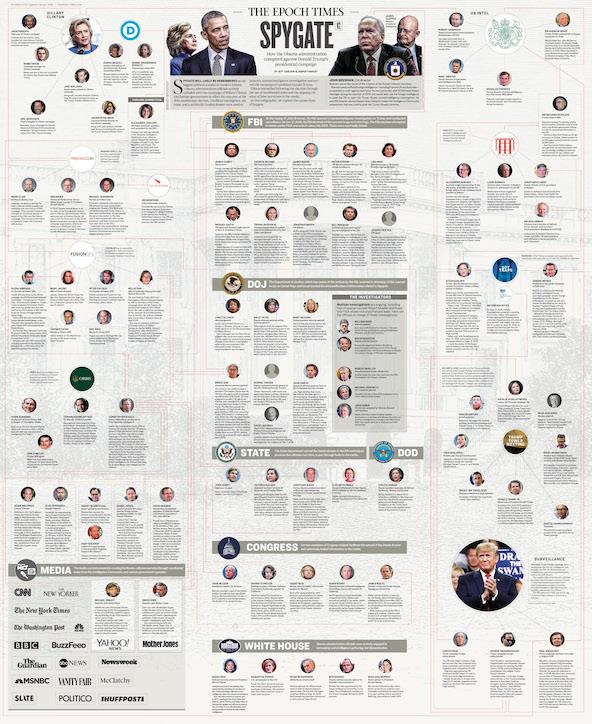
Yates, Clapper, and Brennan supported informing the Trump administration of their concerns. Comey took a dissenting view. On Jan 23, Yates again pressured Comey, telling the FBI director that she believed Flynn could be vulnerable to blackmail. At this point, according to media reports, Comey relented, despite the FBI finding nothing unlawful in the content of Flynn’s calls.
Strzok and Pientka, at the instruction of McCabe, interviewed Flynn the following day. According to court documents, McCabe and other FBI officials “decided the agents would not warn Flynn that it was a crime to lie during an FBI interview because they wanted Flynn to be relaxed.” It was during this interview that Flynn reportedly lied to the FBI.
The DOJ was provided with a detailed briefing of the Flynn interview on the following day. On Jan. 26, Yates contacted White House counsel Don McGahn, who agreed to meet to discuss the matter. Yates arrived at McGahn’s office, bringing Mary McCord, John Carlin’s acting replacement as head of the DOJ’s National Security Division.
McGahn called Yates the following day and asked her to return for a second meeting. Yates returned to the White House without McCord. McGahn asked to examine the FBI’s evidence on Flynn. Yates said she would respond by the following Monday.
Yates failed to provide McGahn with the FBI’s evidence on Flynn. From that point, the pressure on Flynn and the Trump administration escalated—with help from media reporting.
Flynn resigned on Feb. 13, after it was reported that he had misled Pence about phone conversations he’d had with Kislyak.
“I was urging my former colleagues and, frankly speaking, the people on the Hill ... ‘Get as much information as you can. Get as much intelligence as you can before President Obama leaves the administration.’
“The Trump folks, if they found out how we knew what we knew about the Trump staff’s dealing with Russians, [they] would try to compromise those sources and methods, meaning we would no longer have access to that intelligence. ... That’s why you have the leaking.”
Obama Officials Used Unmasking to Target the Trump Campaign
On Tuesday, March 21, 2017, the chair of the House Permanent Select Committee on Intelligence, Rep. Devin Nunes (R-Calif.), met a classified source who showed him “dozens” of intelligence reports. Contained within these reports was evidence of surveillance on the Trump campaign. Nunes held a press conference on March 22 highlighting what he had found:“I recently confirmed that on numerous occasions, the intelligence community incidentally collected information about U.S. citizens involved in the Trump transition. Details about persons associated with the incoming administration, details with little apparent foreign intelligence value were widely disseminated in intelligence community reporting.”
In a series of rapid-fire questions and answers, Nunes attempted to elaborate on what he had been shown:
“From what I know right now, it looks like incidental collection. We don’t know exactly how that was picked up but we’re trying to get to the bottom of it...I think the NSA’s going to comply. I am concerned – we don’t know whether or not the FBI is going to comply. I have placed a call, I’m waiting to talk to Director Comey, hopefully later today.
“I have seen intelligence reports that clearly show the President-elect and his team were at least monitored and disseminated out in intelligence, in what appears to be raw—well I shouldn’t say raw—but intelligence reporting channels.
“It looks to me like it was all legally collected, but it was essentially a lot of information on the President-elect and his transition team and what they were doing.”
Comey Testifies No Obstruction by Trump Administration
On May 3, 2017, James Comey testified before the Senate Judiciary Committee. Under oath, Comey stated that his agency—and the FBI’s investigation—had not been pressured by the Trump administration:Less than a week later, on May 9, Trump fired Comey based on a May 8 recommendation by Deputy Attorney General Rod Rosenstein.
McCabe’s FBI Reaches Out Again to Steele
Within days of Trump’s firing of Comey, the FBI, now under the leadership of acting-FBI Director Andrew McCabe, suddenly decided to reestablish direct contact with Christopher Steele through DOJ official Bruce Ohr.The re-engagement attempt came six months after Steele had been formally terminated by the FBI on Nov. 1, 2016.
The FBI’s re-engagement of Ohr was highlighted during a congressional review of some text messages between Ohr and Steele:
The texts being referenced were sent on May 15, 2017, and refer to a request that Ohr received from the FBI to ask Steele to re-engage with the FBI in the days after Comey had been fired on May 9.
The Battle Between McCabe and Rosenstein
Two days after Comey was fired, on May 11, 2017, McCabe testified before the Senate Intelligence Committee. While the hearing’s original intent had been to focus on national security threats, Trump’s firing of Comey completely altered the topic of the hearing.McCabe, however, failed to inform the committee that he was actively considering opening an obstruction-of-justice probe of Trump—a path he would initiate in a meeting with Rosenstein just five days later.
This was just five days after McCabe had publicly testified that there was no obstruction on the part of the Trump administration.
Sometime later that same day, both Rosenstein and Trump met with former FBI Director Robert Mueller in the Oval Office. The meeting was reported as being for the FBI director position, but the idea that Mueller would be considered for the FBI director role seems highly unlikely.
Rosenstein appointed Mueller as special counsel the following day, on May 17, 2017, and in doing so, Rosenstein removed control of the Trump–Russia investigation from McCabe and put it in the hands of Mueller.
This was confirmed in a recent statement by a DOJ spokesperson, who said, “The deputy attorney general in fact appointed special counsel Robert Mueller, and directed that Mr. McCabe be removed from any participation in that investigation.”
‘There’s No Big There There’
We know the FBI hadn’t found any evidence of collusion in the May 2017 timeframe. While McCabe was attempting to open an obstruction investigation, Peter Strzok—who played a key role in the counterintelligence investigation of the Trump campaign—texted Lisa Page about lacking evidence of collusion:“You and I both know the odds are nothing. If I thought it was likely, I’d be there, no question. I hesitate, in part, because of my gut sense and concern there’s no big there there.”
Page, who was asked about this text during her July 2018 testimony, said, “So I think this represents that even as far as May of 2017, we still couldn’t answer the question.”
James Baker, who was questioned about the Strzok text, was then asked if he’d seen any evidence to the contrary. He stumbled a bit in his reply:
FBI Leadership Speculates on New Trump–Russia Collusion Narrative
In his testimony, Baker disclosed the actual substance of discussions taking place at the upper echelons of the FBI immediately following Comey’s firing—that Vladimir Putin had ordered Trump to fire Comey:The FBI, with no actual evidence of collusion after 10 months of investigating, began discussing a complete hypothetical at the highest levels of leadership as a means to possibly open an obstruction-of-justice investigation of the president of the United States.
During his testimony, Baker told lawmakers: “I had a jaundiced eye about everything, yes. I had skepticism about all this stuff. I was concerned about all of this. This whole situation was horrible, and it was novel and we were trying to figure out what to do, and it was highly unusual.”
The Fixer
Despite the ongoing assault from the intelligence community and holdovers from the Obama administration, Trump was not entirely without allies.Dana Boente, one of the nation’s highest-profile federal prosecutors, served in a series of critical shifting roles within the Trump administration. Boente, who remained the U.S. attorney for the Eastern District of Virginia until early 2018, concurrently became the acting attorney general following the firing of Sally Yates. Boente, who was specifically appointed by Trump, was not directly in the line of succession that had been previously laid out under an unusual executive order from the Obama administration.
Boente was appointed as FBI general counsel on Jan. 23, 2018, replacing Baker, who was demoted and reassigned. Baker is currently the subject of a criminal leak investigation. Boente remains in his position as FBI general counsel.
On March 31, 2017, the Trump administration asked for the resignations all 46 holdover U.S. attorneys from the Obama administration. Trump refused to accept the resignations of just three of them—Boente, Rosenstein, and John Huber.
John Carlin’s Race With Admiral Rogers
The Carter Page FISA application has been the subject of significant media attention, but there’s another element to the story that, although largely ignored, is equally important. It involved what amounted to a surreptitious race between then-NSA Director Adm. Mike Rogers and DOJ National Security Division (NSD) head John Carlin.
On April 18, 2016, Rogers moved aggressively in response to the disclosures. He abruptly shut down all FBI outside-contractor access. At this point, both the FBI and the DOJ’s NSD became aware of Rogers’s compliance review. They may have known earlier, but they were certainly aware after outside-contractor access was halted.
The DOJ’s NSD maintains oversight of the intelligence agencies’ use of Section 702 authority. The NSD and the Office of the Director of National Intelligence (ODNI) jointly conduct reviews of the intelligence agencies’ Section 702 activities every 60 days. The NSD—with notice to the ODNI—is required to report any incidents of agency noncompliance or misconduct to the FISA court.
“The government’s failure to disclose those IG and OCO reviews at the October 4, 2016 hearing [was ascribed] to an institutional ‘lack of candor.’”
On Oct. 15, 2016, Carlin formally left the NSD.
Rogers shut down all “about query” activity on Oct. 21, 2016. “About queries” are particularly worrisome, since they occur when the target is neither the sender nor the recipient of the collected communication; rather, the target’s “query,” such as an email address, is being passed between two other communicants.
On the same day, the DOJ and FBI sought and received a Title I FISA warrant on Trump campaign adviser Carter Page. At this point, the FISA court still was unaware of the Section 702 violations.
On Oct. 24, 2016, Rogers verbally informed the FISA court of his findings:
“On October 24, 2016, the government orally apprised the Court of significant non-compliance with the NSA’s minimization procedures involving queries of data acquired under Section 702 using U.S. person identifiers. The full scope of non-compliant querying practices had not been previously disclosed to the Court.”
Rogers appeared formally before the FISA court on Oct. 26, 2016, and presented the written findings of his audit:
“Two days later, on the day the Court otherwise would have had to complete its review of the certifications and procedures, the government made a written submission regarding those compliance problems ... and the Court held a hearing to address them.
“The government reported that the NSA IG and OCO were conducting other reviews covering different time periods, with preliminary results suggesting that the problem was widespread during all periods under review.”
The FISA court was unaware of the FISA “query” violations until they were presented to the court by then-NSA Director Rogers.
Carlin didn’t disclose his knowledge of FISA abuse in the annual Section 702 certifications, apparently in order to avoid raising suspicions at the FISA court ahead of receiving the Carter Page FISA warrant.
FISA Abuse & the FISC
Rogers presented his findings directly to the FISA court’s presiding judge, Rosemary Collyer. Collyer and Rogers would work together for the next six months, addressing the issues that Rogers had uncovered.The litany of abuses described in the April 26, 2017, ruling was shocking and detailed the use of private contractors by the FBI in relation to Section 702 data. Collyer referred to it as “a very serious Fourth Amendment issue.” The FBI was specifically singled out by the court numerous times in the ruling:
“The improper access previously afforded the contractors has been discontinued. The Court is nonetheless concerned about the FBI’s apparent disregard of minimization rules and whether the FBI may be engaging in similar disclosures of raw Section 702 information that have not been reported.”
Rogers informed Collyer of the ongoing FISA abuses by the FBI and NSD just three days after she personally signed the Carter Page FISA warrant.
Virtually every FBI and NSD official with material involvement in the original Carter Page FISA application would later be removed—either through firing or resignation.
